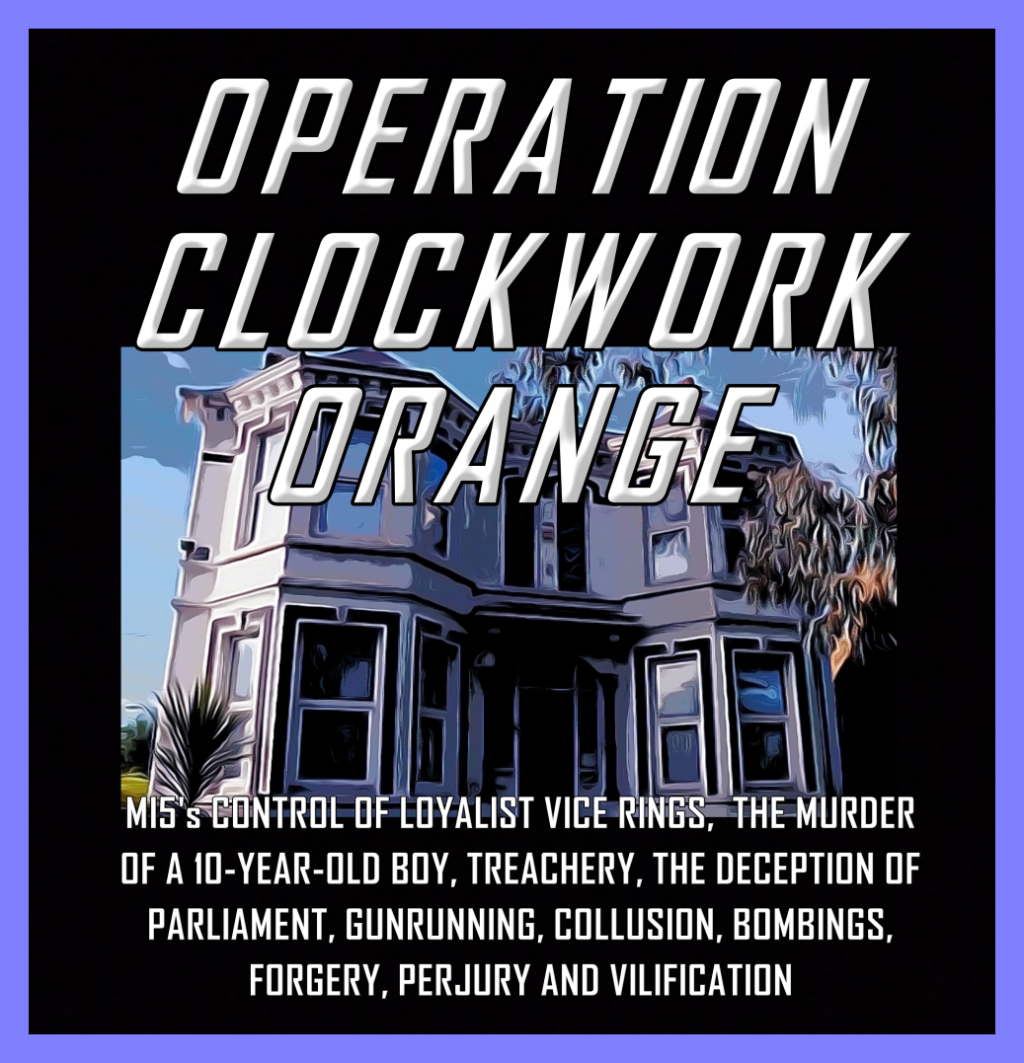By David Burke.

[Volumes 1, 3 and 4, of this ebook can be found by clicking on the top section of this page (purple lettering) which will return you to the home page.]
Chapter 4.
A Clash of Interests.
040. Stepping on the toes of MI5.
The British Army was not aware that William McGrath, the commander of Tara, a Loyalist paramilitary organisation, was a critical player in MI5’s endeavours to spy on Unionist paedophiles. To the military, he was a terrorist and, therefore, a target to be neutralised.
During the summer of 1973 Colin Wallace of the British army’s psychological operations wing, the IPU, was instructed by his superiors ‘to brief the press unattributably’ about McGrath and Tara. This move had the added benefit of exposing the existence of the child abuse network in Northern Ireland of which McGrath was a member. Kincora was only one of a string of care homes which were compromised. The children at Williamson House, Bawnmore and elsewhere, were being preyed upon too.
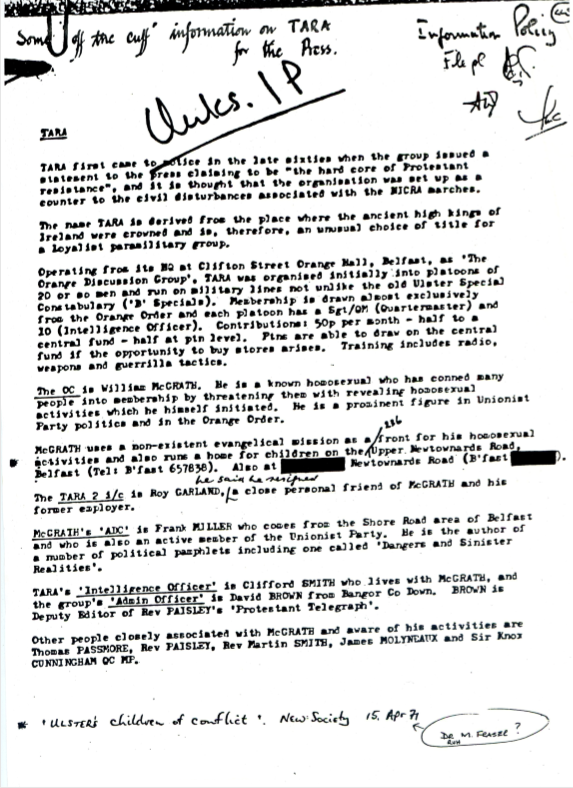
Wallace could not call a public press conference to denounce McGrath as the military had to protect their confidential sources. Hence, Wallace circulated a press briefing in his normal discreet manner. It described how the ‘OC’ or Officer-in-Command of Tara was:
William MCGRATH. He is a known homosexual who has conned many people into membership [of Tara] by threatening them with revealing homosexual activities which he himself initiated. He is a prominent figure in Unionist Party politics and in the Orange Order.
Also, that McGrath:
uses a non-existent evangelical mission as a front for his homosexual activities and also runs a home for children on the 236 Upper Newtownards Road, Belfast (Tel: B’fast 657838).
The foregoing was the address and telephone number of Kincora Boys’ Home.
Jim Molyneaux MP was listed in the final paragraph of the briefing as one of a number of ‘people associated with McGRATH’ and who was ‘aware of his activities’.
041. Journalists confirm they saw the Tara press briefing.
A number of journalists have confirmed that they either saw the 1973 press sheet or received a briefing from Wallace about Tara based on the information that was contained in it.
On 13 March 1977, The Sunday Times published an article entitled: ‘The Army’s Secret War in Northern Ireland’ by David Blundy. It reported that at a British Army briefing in 1974:
at which a Sunday Times reporter was present attempts were made to link Paisley with the Protestant para-military group called Tara, a small, obscure and ineffective group as Ulster’s para-military organisations go. The Sunday Times has a copy of an Army intelligence summary on Tara which contains accurate details about its organisation. .. One member, which the summary names, is called a ‘homosexual and has conned many people into membership by threatening them with revealing homosexual activities which he had initiated.
The Sunday Times believed the purpose of the briefing was:
to link Paisley with homosexuals and Communist sympathisers. .. Our sources say that the army has produced three anonymous documents on this theme which circulated in Belfast.

Kevin Dowling of The Sunday Mirror was another of the journalists who saw it. He gave the Hart Inquiry chaired by Judge Anthony Hart (also known as the Historical Institutional Abuse (HIA) inquiry) ‘a copy of a telex he had sent to his editor in 1973’ as a result of information furnished to him by Wallace. The telex stated that ‘according to Mr. Wallace the CO [i.e. Commanding Officer] of Tara was William McGrath and a homosexual’ and that ‘McGrath apparently uses a non-existent evangelical mission as a front to entice young Protestant men into homosexuality. Once in they are potential blackmail victims and soldiers of Tara.’
David McKittrick of the Irish Times also received a similar briefing.
In his 2017 Kincora report Judge Anthony Hart doubled over in contortions to undermine Wallace, yet he was not able to deny that Wallace had alerted the media to McGrath’s abuse of ‘young’ men in 1973. In other words, the document that refers to James Molyneaux’s knowledge of McGrath’s activities is recognised – officially – by the British state, as genuine.
The reason Hart had to make this concession – despite his obstinate bias and determination not to find anything that might upset MI5 and the NIO – was because the evidence of its existence was overwhelming.
042. A threat to the most audacious dirty trick operation since the Second World War.
In February 1974 Harold Wilson returned to power at Westminster. MI5 and elements inside MI6 and the CIA were aghast as they believed Wilson was a communist. They resolved to destroy him. James Jesus Angleton of the CIA in particular believed Wilson was part of a global KGB conspiracy. Angleton was sacked from the CIA on Christmas eve 1974. His paranoia about KGB moles in the CIA and the illegal surveillance of US citizens had become too much for the CIA and President Gerald Ford to bear.
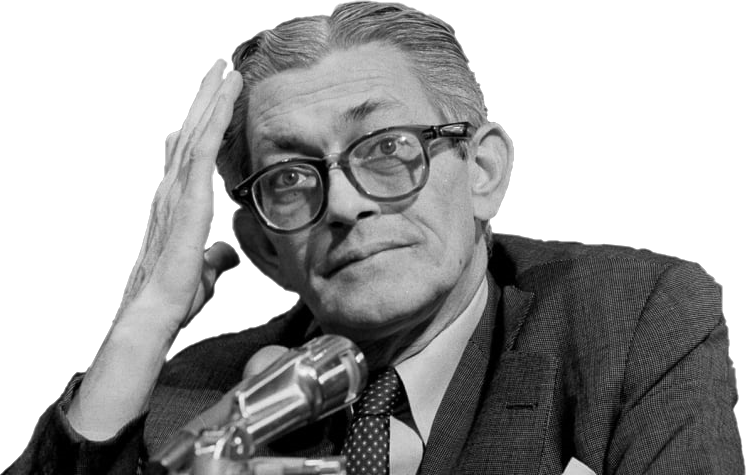
In 1974, the anti-Wilson conspirators in MI5 set about creating an organisation to oppose the Norther Ireland Power Sharing Executive. No doubt, one would have emerged anyway without any input from them. In the event, opposition rallied around the banner of the Ulster Workers Council (UWC). MI5 planned to use the UWC to tear down the Executive. They hoped this would make Wilson look impotent.

Wallace’s 1973 press briefing about McGrath and Tara now became a threat to the UWC strike. The information in it had the potential to lower morale and spark infighting inside the UWC. For a start, Ian Paisley, who supported the UWC strike, and some of his colleagues, might have been drummed out of public life.
A journalist could call Wallace and ask about Tara at any moment. Wallace mixed with them daily in his overt role as the public relations officer of the British military at HQNI.
Wallace had become a ticking bomb. One way of the other, he had to be taken off the pitch.
043. James Miller, MI5 and Tara.
According to one MI5 agent, MI5 did not join the UWC bandwagon, they were the carpenters who assembled it. The agent, James Miller, was an Englishman born in 1932. He had served in the British Army as a sergeant major, and, in later life, became a lift engineer. This occupation afforded him access to places such as the Rossville Flats in Derry which were out of bounds to the RUC and British army. Miller also had the run of the Divis Flats in Belfast.[1]
Miller settled in Monkstown, County Antrim and married an Irish woman. At one stage in the early 1970s, members of the IRA denounced him as a spy but he managed to convince Ivor Bell, a senior Belfast Provisional IRA leader, that he had been wrongly accused and was exactly what he presented himself as: a straightforward working-class man. At the time the accusation was made, Bell took Miller to his home where he protected him.
Miller knew a lot about a variety of Loyalist groups and their leaders. In 1970 or 1971, Miller was assigned by MI5 to spy on Loyalists who were associated with Tara. It does not appear that Miller was briefed that its commander, William McGrath, was already a British agent. Conversely, McGrath appears to have known that Miller was, like him, a British agent. McGrath invited Miller to at least one Tara meeting. This provided Miller with an opportunity to network with an assortment of Loyalist terrorists. At this time, many members of the UVF interacted with Tara at their meetings.
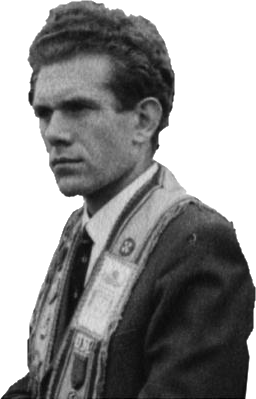
Roy Garland, once second-in-command of Tara, recalls that Miller ‘was never a Tara member but appeared at a meeting at the Clifton Street Orange Hall. I am pretty sure it was in 1970 but possibly early 1971. I think he was of medium build. The UVF people recognised him as having worked on lifts in the Falls Road and said he was MI5 – they may have said British intelligence. I passed this information on to McGrath and was asked by him to see Miller out, which I did. Miller said nothing – not a word from what I remember as he left. I last saw was him walking towards Belfast centre. I knew little about him before this and since, apart from what I have read. I suspect McGrath had invited him.’[2]
Miller did manage to pick up some information about McGrath’s sexual activities which he passed over to MI5. This underlines the point that he was not aware McGrath was an MI5 agent.
In a report dated 7 April 1972, Miller told MI5 that McGrath ‘had been accused of assaulting small boys … ‘. This document was examined by the Hart Inquiry. Judge Hart reported in 2017 that ‘by virtue of section 5 (1) of the Criminal Law Act (Northern Ireland) 1967, MI5 was subject to the same legal obligation as everyone else in Northern Ireland to report the commission of an ‘arrestable offence’ (that is an offence punishable with five years imprisonment) to the police where they knew or believed that such an offence, or some other arrestable offence had been committed. An alleged assault on small boys could, depending on the nature of the alleged assault have been an arrestable offence which ought to have been reported to the police’.’
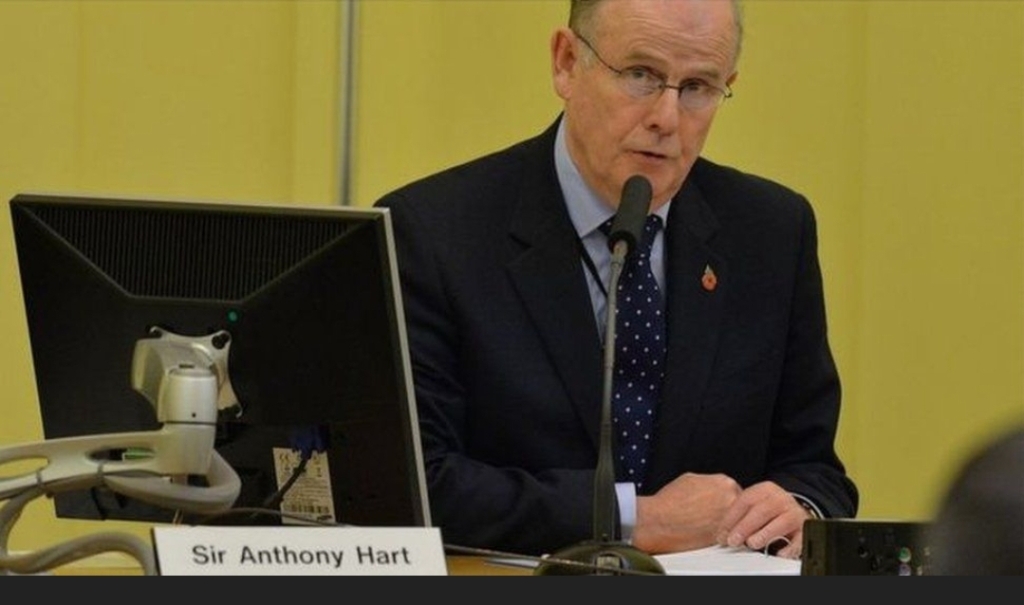
Hart did not bother to ask MI5 why it failed to report McGrath to the RUC. He decided to figure out their lapse on his own. The notion he drew from the air was that MI5 had failed to act against McGrath to protect Miller from exposure as an agent. This demonstrated a profound ignorance of the basic facts of the Miller case. Miller had spoken to The Sunday Times newspaper. As millions of its readers knew, the UDA realised that Miller was a British agent in 1974. This resulted in him fleeing to England where he was provided with a new identity and a small business in Devon.
Hart should have read the papers before him properly. Had he done so, he should then have asked MI5 why it failed to report McGrath to the RUC {i} in 1972 and, if they said this was to protect Miller, {ii} in 1974 after Miller returned to England.
Hart’s speculative reasoning is not particularly impressive. By 7 April 1972, when Miller reported on McGrath’s sexual proclivities, hundreds, if not thousands, of people either knew or had heard rumours about McGrath’s sexuality. Hence, there was no reason to fear that an arrest of McGrath would have focussed attention on Miller. Miller would not have been called upon to testify against him. Instead, the RUC would have commenced an inquiry during which they would have spoken to residents and former residents and collected evidence against him. A first year law student – let alone a retired judge – should have appreciated this rather obvious position.
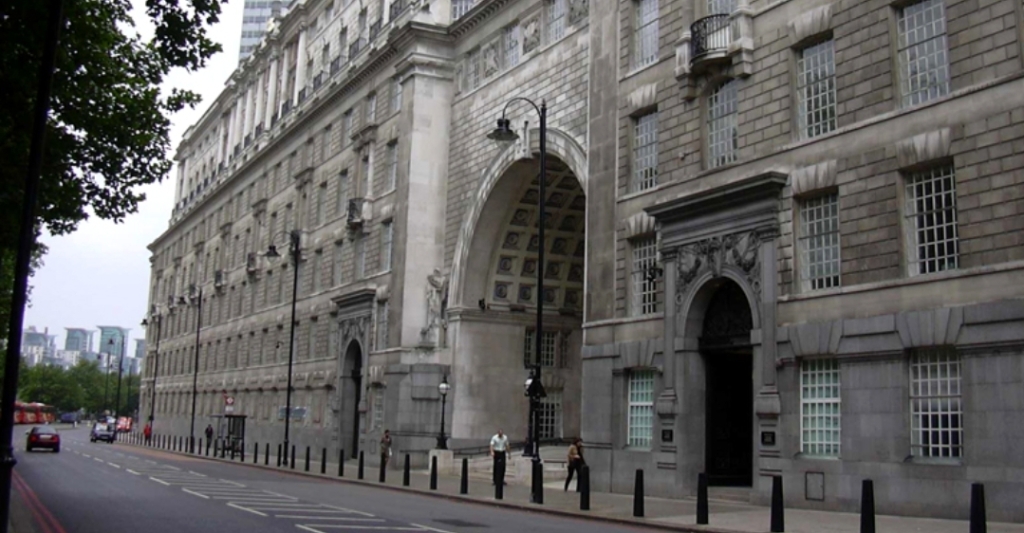
MI5 has not volunteered an explanation for its inaction in response to Miller’s April 1972 report since Hart published his report in 2017. MI5 has not corrected Hart’s mistake either.
McGrath was not exposed until 1980. McGrath was a prolific abuser of boys. Children as young as eight were being abused by members of the vice ring of which he was a leading figure.[3] A large number of boys were assaulted by McGrath during the period 1972-80.
044. James Miller, MI5 and the UDA.
After the failure of his Tara mission, Miller was instructed by MI5 to penetrate the UDA. He did so successfully and rose to become the UDA’s director of intelligence.

In 1987 Miller told journalist Barrie Penrose that in 1974 his MI5 handlers had encouraged him to generate opposition in NI to Harold Wilson. ‘My case officers told me to do it. MI5 wanted to get at Wilson. They said he was a Soviet agent.’[4] Penrose quoted him in the Sunday Times as having revealed to him that:
‘I did a dangerous job over there for nearly five years and many UDA and IRA men went to prison as a result,’ Miller said last night. ‘But I could never understand why my case officers, Lt Col Brian X and George X, wanted the UDA to start a [Loyalist] strike [against the Northern Ireland Power-Sharing Executive] in the first place. But they specifically said I should get UDA men at grass-roots level to ‘start pushing’ for a strike. So I did.‘
.. [He] said that in early 1974 his case officers instructed him to promote the idea within the UDA of mounting a general strike which would paralyze Northern Ireland. The result, says Miller, was the Ulster Workers’ Strike in May 1974 which severely embarrassed Wilson’s government and helped to torpedo the Sunningdale Power Sharing Executive of Catholics and Protestants, which had included an ‘Irish dimension’ by allowing the Irish government a consultative role in Ulster.[5]
‘Brian X’ was Lt Col. Dixon.[6]

Miller’s career came to an end in 1974 after the UDA became suspicious of his true loyalty. He returned to England permanently.
In later years, Brian Nelson, another British intelligence agent, became the UDA’s director of intelligence.[7]
045. The Dublin and Monaghan bombings.

The destruction of the NI Executive was achieved by the activities of two Loyalist paramilitary groups, the UDA and UVF.
Both organisations were penetrated by MI5.
Miller encouraged the UDA to deploy its muscle to make sure the UWC strike brought the North to a standstill.
The smaller, more clandestine UVF bombed Dublin and Monaghan at the height of the strike, on 17 May 1974.
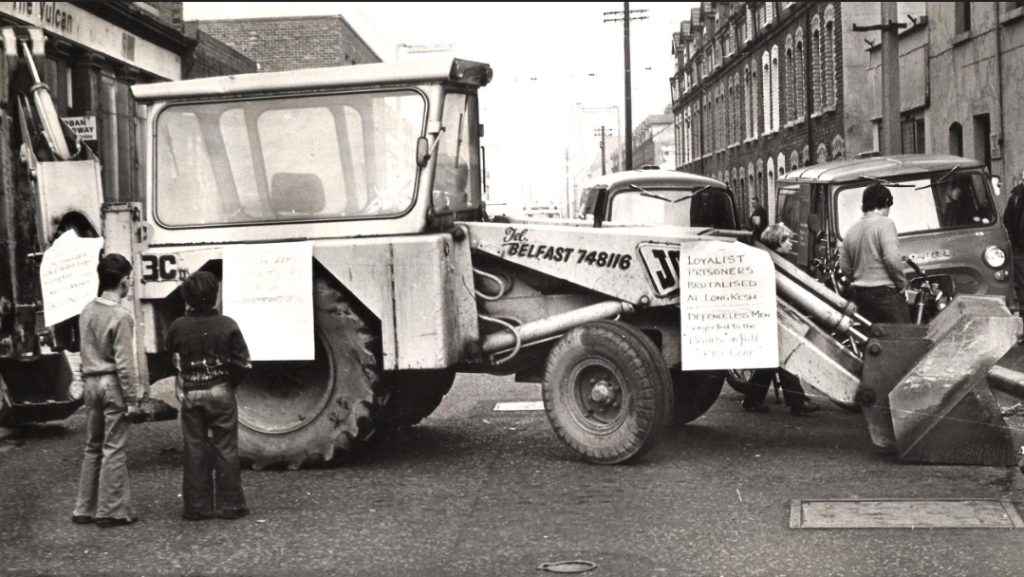
Some gardai concluded the bomb attacks were masterminded by British intelligence, or at least an out-of-control rogue element within it. Thirty-three people were slaughtered. It spelt the death knell for the Executive.
Eamon Doherty, who became garda commissioner in November 1987, told Yorkshire Television in 1993 that
I didn’t think at the time and I don’t think now that any Loyalist group could have done this on their own in 1974. I believe that if they participated in this operation, they must have been helped.
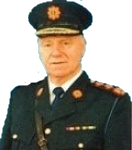
Doherty’s comments were broadcast on 6 July 1993 as part of The Hidden Hand: The Forgotten Massacre programme. On it another garda officer criticised the lack of assistance the RUC provided to the garda enquiry into the twin atrocities;
You were dealing with the Protestant force [i.e. the RUC] and there was definitely a lack of co-operation. Our operation had to end because we couldn’t get any further in the North. The well just ran dry.
Forensic examinations of the bombs indicated they contained chemicals which the IRA were known to use but were apparently unknown to the UDA. This led to the suspicion the bombs were made from explosives confiscated from the IRA and preserved by the British army or the RUC, but later smuggled out to the 1974 bomb makers. The Dublin bombs also boasted sophisticated timing devices which managed to detonate three car bombs within 90 seconds of each other, an expertise which the UDA had never managed to achieve prior to the attack, nor subsequently repeat.
046. The UVF bomb gang – agents of the RUC Special Branch and MI5.
Some of the Loyalists involved in the atrocity were agents of the RUC Special Branch. The latter organisation worked hand in glove with MI5. The RUC agents included the notorious serial killer, Robin Jackson.[8] Various official inquiries have gained access to RUC Special Branch files. Some of them reveal an agent-handler relationship between members of the Dublin and Monaghan bomb gang and the RUC. The key RUC Special Branch figure in the area where the gang operated was Frank Murray. There is no doubt that he knew that Robin Jackson of the UVF Mid-Ulster division was involved in the Dublin bombings, as did many in the RUC Special Branch and MI5. Nonetheless, Murray and his officers continued to protect Jackson from arrest.
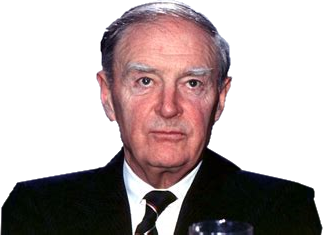
The Executive fell on 28 May 1974, due in no small part to the bombings. Taoiseach Liam Cosgrave reacted to this with a fury which he directed at Harold Wilson whom he blamed for not having done enough to crush the UWC strike. At one stage he had even suggested that the UWC pickets and their barricades should have been hosed off the streets. Dublin was infuriated because power sharing had worked so well: the Unionist, Alliance and SDLP ministers had got along famously. It would take decades of carnage before another power sharing executive was created.
047. The role of Frank Cooper.

The SDLP were angry too, especially about the role of chief civil servant at the NIO, Frank Cooper. The SDLP felt he did little to thwart the UWC strike. Austin Curry of the SDLP wrote:
However, what the Secretary of State (Merlyn Rees) lacked in decisiveness was usually made up for by his Permanent Secretary, Frank Cooper, who had occasion under Whitelaw, [Francis] Pym and [Merlyn] Rees, displayed a ruthless attitude. For some reason, this attitude was not apparent in his government’s dealing during the loyalist strike, a factor which in itself raises certain questions in my mind about intentions and motivations.[9]
048. John Hume and the man from MI5.
John Hume, the future leader of the SDLP and Nobel Peace Prize winner, was a minister in the Executive. His biographer Barry White described how Hume believed there were ‘indications that the UWC had early warnings of security decisions’, e.g., where the military would be deployed to remove road blockages. White also wrote about how the UWC’s
main source of information was through a former senior civil servant who retained good contacts at Stormont, and there was a valuable reassurance in an anonymous telephone call midway through the strike. A man with a cultured voice, who seem to know what was happening inside Stormont, simply told [strike leader Andy] Tyrie to ‘keep up the good work’ and victory was certain. (167)

Hume sat in on a meeting at which the then overarching British spymaster in NI, DCI Denis Payne, attended. Hume had challenged the assertion that the NI electricity service had been reduced to a paltry thirty per cent output due to the strike and sought a meeting with the well-meaning but naïve NI Secretary of State, Merlyn Rees, to challenge the claim. Payne was produced to confirm the allegedly precarious position.
049. The State conspirators behind the UWC strike.
It is difficult to believe that the UVF gang which included Robin Jackson, an agent of the RUC, bombed Dublin without the foreknowledge of the RUC’s special branch.
It is more likely that the RUC and MI5 was directing him – and quite possibly others – in the same way that MI5 had instructed James Miller to agitate for a strike to topple the Executive.
The cabal pulling the strings most likely included Denis Payne, Ian Cameron, Peter Wright and Michael McCaul of MI5.

Peter Wight was the assistant to Michael Hanley, the D-G of MI5. He was one of the key anti-Wilson plotters. He wrote about the plot in his book, ‘Spycatcher’.
Wright was a veteran of the world of dirty tricks, some of which he outlined in ‘Spycatcher’.
He revealed how he had wanted to murder the leader of EOKA in Cyprus in the book. He was directly involved in the surveillance aspect of the EOKA leader.
There was also a revelation in the book about a nerve gas plot to kill Nasser in Egypt.
Yet, there were things Wright did in Ireland which he left out of the ‘Spycatcher’. He wrote a second book in which he said he was not going to reveal his Irish dirty trick activities. What could he have had in mind? What could be more sensitive than his revelations about Cyprus, Egypt and the anti-Wilson plot? A clue might lie in the fact he made no disclosure about James Miller or any of the assistance MI5 gave to the UWC strike. Wright did compile a secret dossier containing the secrets the kept out of ‘Spycatcher’. It has never surfaced.
Michael McCaul was another senior MI5 officer. He was – or was about to become – the man MI5 used to maintain contact with the gardai in Dublin. He was named in the House of Commons as one of the anti-Wilson plotters. He was close to Wright. He became very close to Larry Wren, the director of Garda Intelligence in Dublin in the 1970s.
Other suspects include Frank Cooper at the NIO.
Frank Murray, the senior RUC special Branch officer in Mid Ulster, may been involved too as it was his officers who ran Robin Jackson.
050. The irritation of having to build up another body of effective ‘kompromat’
The anti-Wilson plotters wanted to keep the ‘kompromat’ on the Unionist leaders up their sleeves, for use another day when it might once again suit their purposes. If Paisley and Molyneaux were to sink into disgrace because of briefings from Wallace, MI5 would have to build up a body of ‘kompromat’ about those who would replace them.
That would not have meant that MI5 would have to start from scratch. The process of collecting ‘kompromat’ was ongoing and omnipresent. One Loyalist whose star was in the ascent ticked three boxes: {i} he was a transvestite, {ii} a member of Tara and {iii} a lover of McGrath. He became an MI5 agent.
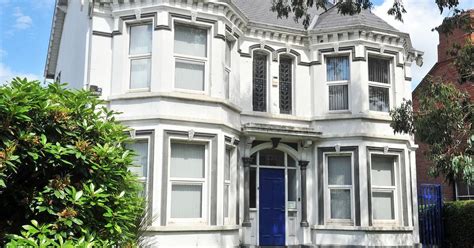
By 1976, MI5 would secure a recording of another promising young DUP politician. It would be made in a bedroom on the first floor of the Park Avenue Hotel in Belfast. The recording featured the DUP man and a boy from Kincora. The politician – who is still alive – has a reputation as a wife beater. He was a friend and admirer of John McKeague, the notorious paedophile and terrorist.
Chapter 5.
Colin Wallace, a Marked Man.
051. MI5 had to destroy Wallace to conceal its dirty linen.
Colin Wallace became a threat to these complex intrigues. His 1973 press briefing threatened to expose McGrath and Paisley. As described earlier, he was hearing dark rumours about the Dublin and Monaghan bombings. He also knew of the scheming against the Labour Party (and others) from his dealings with ‘John Shaw’.
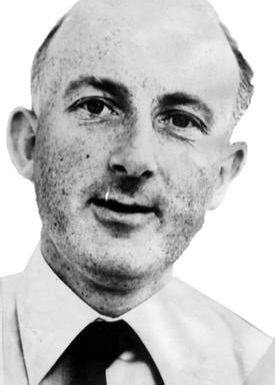
Wallace became increasingly uncomfortable with ‘Shaw’ and the direction in which he was taking Operation Clockwork Orange. In 1974 he told him that he no longer wanted to have any part of it.
He returned the documents ‘Shaw’ had given him but kept the notes he had made from them.

If McGrath was exposed in public because of Wallace, a domino cascade of revelations might commence. Harold Wilson was still prime minister. He had the power to instigate all sorts of inquiries. All sorts of secrets might yet spill out.
Wallace was now a marked man.
No less a figure than Sir Michael Hanley, the D-G of MI5, would become involved in the plot against Wallace.
Stella Rimington, D-G of MI5, 1992-96, described Hanley in her memoirs as ‘a large, gruff, red-faced man, who had a reputation for being abrupt and having a fierce temper’.
The document which proves Hanley’s involvement in the plot is reproduced in this volume. It reveals nothing less than malfeasance in public office.
An MI5 officer called Ian Cameron – a man once tipped to become director-general of MI5 – led the campaign of dirty tricks to destroy Wallace and protect the gamey leadership of Unionism and MI5’s other dirty linen. A photograph of Cameron has yet to surface. He was round faced, dark haired, medium to well built, about 5′ 9 or 5′ 10 in height. He had served with MI5 in Berlin. During his career, he sometimes posed as an employee of the MoD.
MI5 connived to have Wallace dismissed for handing over classified information to the journalist Robert Fisk.
Yet, it was Wallace’s job to do precisely this under the terms of his approved job ‘justification’. He never once leaked a document without the permission of his superiors.
Since Wallace and his military superiors were not aware that McGrath was both an MI5 and MI6 asset, they had no inkling of the minefield into which they had stumbled.
052. The Brian McDermott Child Murder Memo submitted to Col Geoffrey Hutton.

Wallace continued to cause trouble for MI5. On 8 November 1974, Wallace produced a memo for Col Geoffrey Hutton, his superior (hereafter ‘The Brian McDermott Child Murder Memo’). It highlighted the abuse at Kincora and at other children’s homes. It also focused on the horrific murder of Brian McDermott.
In it Wallace stated:
2. If we are to interest the press in this matter with a view to exposing what has been taking place and thereby stopping further assaults on the youngsters in these hostels, then I would strongly advise that we make use of our own background information … As you know I did try to develop press interest in this matter last year but without any success. …
7. McGRATH was himself the subject of an internal investigation by the Belfast Corporation Welfare Department in 1972/73, following allegations of more homosexual assaults on the inmates of Kincora. One of our own sources confirmed in 1972 that a number of complaints had been received about his behaviour and that, although the complaints had been passed to senior welfare staff and to the RUC no action had been taken against him.
10 (b) The Rev PAISLEY is aware of the situation but has failed to take any action because of possible blackmail pressure owing to his connection with MCGRATH, DAVID BROWN and JOHN McKEAGUE. ..
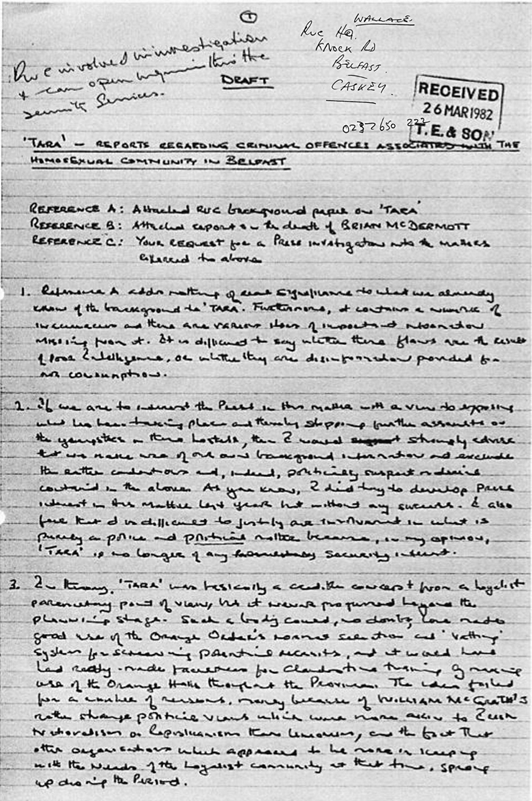
053. Wallace begins to suspect the paedophile ring is being protected by the police.
Under the heading ‘conclusions and recommendations’ in the Brian McDermott Child Murder Memo, Wallace stated:
I am far from happy with the quality of the information available on this matter, and I am even more unhappy because of the, as yet unexplained, failure of the RUC or NIO to take on the task.
I find it very difficult to accept that the RUC consistently failed to take action on such serious allegations unless they had specifically received some form of policy direction. Such direction could only have come from a very high political or police level. If that is the case then we should be even more wary about getting involved.
On the other hand, if the allegations are true then we should do everything possible to ensure that the situation is not allowed to continue. The youngsters in these hostels almost certainly come from problem families, and it is clear that no one will fight their case unless we do.
054. Alan Campbell, child serial killer and an agent of MI5.
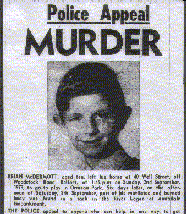
Alan Campbell was suspected of the murder of Brian McDermott. He was a friend of William McGrath and John McKeague, the sadistic and murderous leader of the Red Hand Commando. Campbell and McKeague had been key figures in the Shankill Defence Association (SDA), the forerunner to the UDA. Both were associates of Ian Paisley. McKeague once served as Paisley’s bodyguard.
RUC officers were about to arrest Campbell for the murder of McDermott when a force more powerful than they stepped in and stayed their hand. Campbell was never charged. Authors Jim Cusack and Henry McDonald have stated that he was a British agent. They described him as ‘The Demon Preacher’.
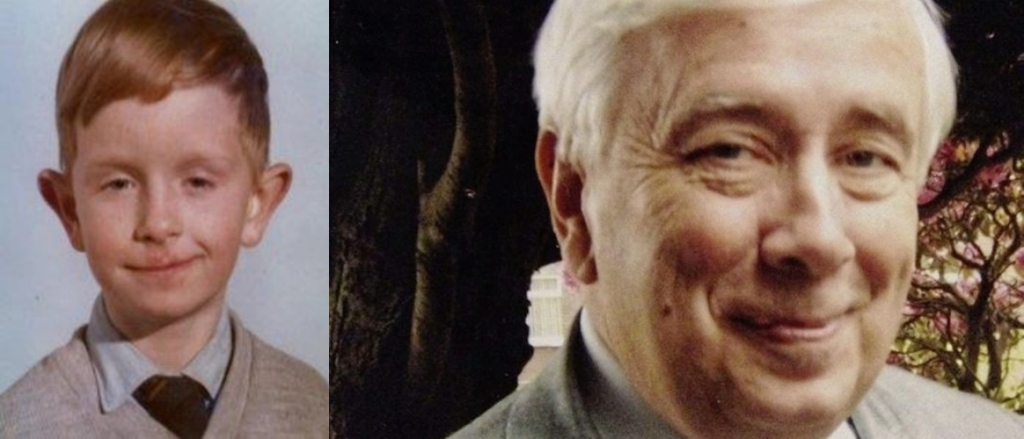
Campbell is suspected for the murder of four other boys who disappeared never to be found.
The RUC officers who investigated the McDermott murder – and who were about to arrest Campbell for it – informed British military intelligence at Lisburn of their intention. The Army was being kept in the loop by the RUC because Campbell was a member of Tara. Suddenly, the RUC was ordered to leave Campbell alone. Only MI5 and the NIO had that sort of power.

Wallace indicated in the Brian McDermott Child Murder Memo that members of McKeague’s circle were implicated in the murder of McDermott. In the conclusion section of his report he stated:
Those responsible for the murder of Brian McDermott must be brought to trial before another child is killed, and if it can be proved that there is a connection with this homosexual group, then the RUC must be forced to take action irrespective of who is involved.
Wallace recommended that the Army should enjoin the RUC and responsible journalists to investigate the scandal.
Had Wallace’s recommendation been accepted, the Kincora scandal might have erupted in late 1974.
Railton failed to act against the paedophiles.
Instead, six weeks later Wallace was dismissed from his job.
055. Another headache for Ian Cameron of MI5.
Capt. Brian Gemmell, a military intelligence officer who reported to Ian Cameron of MI5, also learnt about Kincora in the mid-1970s. ‘The Kincora information was part and parcel of my Intelligence Reports (Intreps) on [William McGrath’s paramilitary group] Tara. It was classified Secret and sent/taken by me to HQNI and handed over to MI5 staff there.’
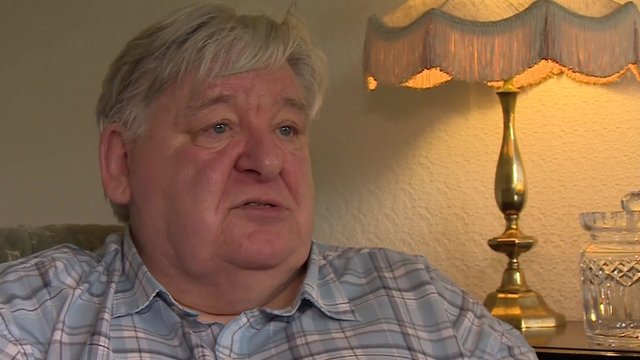
Gemmell had obtained his information from three different sources: James Miller, Roy Garland and Jim McCormick. Garland had served as the second-in-command of Tara.
After he submitted his report to MI5, Gemmell was summoned to a meeting by Cameron.
According to Gemmell, ‘Ian Cameron was very much a father figure to me at the time’. He was then in his mid-20s while Cameron was in his early 60s. According to Gemmell, the MI5 boss was ‘normally a very nice chap, but he reacted very strongly. He told me that MI5 did not concern itself with what homosexuals did and he ordered me to stop using an agent I had within Tara, who we had codenamed Royal Flush.’
The Hart Inquiry reported in 2017 that MI5 had confirmed to it that {i} Gemmell had indeed reported on Tara to Cameron and {ii} that Cameron had acknowledged that he had told Gemmell to desist from further enquiries into allegations concerning homosexuality.[10]
Despite all this, Hart dismissed the claim that Gemmell reported the abuse at Kincora to MI5 because Gemmell had stated that he had done so in a four-page written report. The problem with this was that MI5 could not find such a report for Hart. The absence of the report convinced Hart that Gemmell was a fantasist.
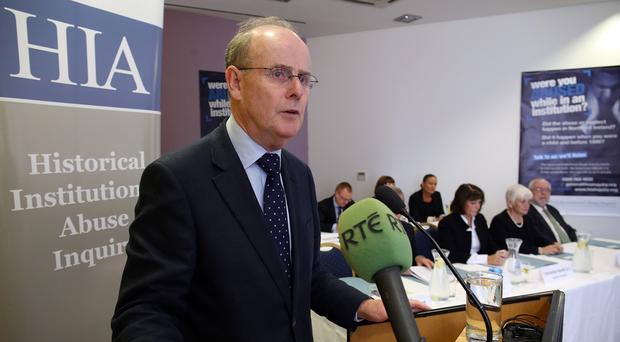
056. Ian Cameron’s secret report on the use of disinformation by the British Army.
An internal MI5 memo, dated 22 February 1990, addressed to MI5’s Legal Adviser, Bernard Sheldon, and copied to the Director-General of MI5, Patrick Walker, reveals that Cameron knew full well that the Army was involved in the dissemination of disinformation. The significance of this is that it illustrates that Cameron was aware of the ‘PSYOPS’ unit of which Wallace was a member. Clearly, many others did too. Yet, Cameron would pretend otherwise as part of MI5’s plot to get rid of Wallace. The 1990 memo noted that:
Cameron was in no doubt – as his report says – that disinformation was carried out by the army and believed that the Generals gave clearance for some operations.
This was a reference to the Information Policy Unit (IPU) of which Wallace was a member. There were other military wings which participated in psychological activities.
The MI5 memo proceeded to describe how:
Cameron thought the NIO was involved with some operations – but might have confused the period when this happened – after [John] Leahy[11] arrived at the NIO (probably 1975) there was no doubt that Leahy gave clearances. Cameron thought that 39 Brigade [which was based in Belfast] and other brigades [of the British Army] carried out low level ploys without reference.
Yet, in 1974 and 1975, Cameron would weave a complex web designed to oust Wallace from his job on the basis that he did not have clearance to pass sensitive files to journalists.
057. Wallace is put forward for an MBE.
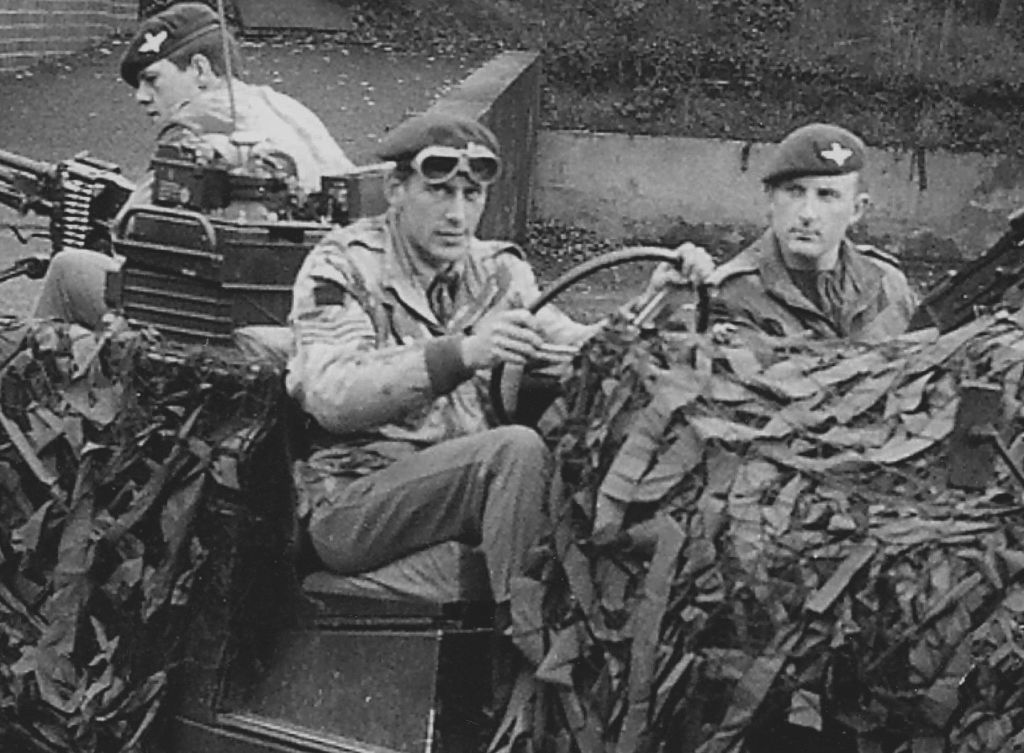
One of the challenges in trying to derail Wallace’s career was that he was hugely popular amongst his colleagues. He was put forward twice for an MBE in 1974, by Tony Staughton, the Chief Information Officer at Army HQ NI. Wallace was only 29 years of age. The recommendation of an MBE for a man as young as this was virtually unheard of.
The MoD procrastinated about making the award out of a concern it might draw attention to Wallace’s covert activities. Yet, the same MoD would soon dismiss him for engaging in PSYOPS in the pretence he had no clearance for such activity.
After Staughton left, Peter Broderick succeeded him. One of the requests Staughton made to Broderick was to maintain the pressure on the MoD to award Wallace with an MBE.

Cameron was unmoved by the hard work, long hours and creativity Wallace had brought to his job. To him, Wallace was a threat to the ongoing concealment of the rape of children which was benefitting MI5 ‘kompromat’ and blackmail operations. Cameron resolved to shaft Wallace by making it appear he was leaking restricted and secret files to the well-known journalist, Robert Fisk, without authority. To achieve this, he would have to conceal Wallace’s secret PSYOPS role.
058. The hypocrisy of Ian Cameron in relation to Wallace and Fisk.
Telegrams from the Irish Joint Section (IJS), a high level intelligence coordination body comprising the Army, MI5 and MI6, reveal that the IJS regarded Robert Fisk as a ‘good investigative journalist’. They also show that between April and October 1974, Wallace was asked by the IJS to engage with Fisk to encourage him to write an exposé on the activities of Bill Fuller, a perceived major IRA fund-raiser and arms supplier who was based in the USA. The IJS made a request to Wallace to ‘give Fisk as many names and leads to follow up as possible’.
Wallace was given a ‘dossier’ by the IJS to supply to Fisk. It was one designated ‘Secret’.
There is a world of difference between ‘secret’ and ‘restricted’ documents.

Virtually all British army documents were classified ‘restricted’ – even the ‘tribal’ street maps of Belfast which showed where Nationalist and Loyalist communities were located. ‘Secret’ documents are far more sensitive.
The Army Press Desk at HQNI frequently gave visiting journalists copies of the ‘tribal’ map of Belfast as well as the ‘Yellow Cards’ and ‘Blue Cards’ issued to soldiers. These cards contained the rules for arresting people and for opening fire.
Despite all of this, Ian Cameron’s plot to destroy Wallace involved alleging he had leaked low level documents to Robert Fisk without authority.
It is fair to comment that the hypocrisy at this juncture is staggering. Cameron was a key IJS participant. He was plotting to frame Wallace for leaking low level ‘restricted’ information to Fisk while at the same time he – Cameron – was participating in IJS meetings at which documents with a far higher designation were being channelled to Fisk via no less a figure than Wallace.
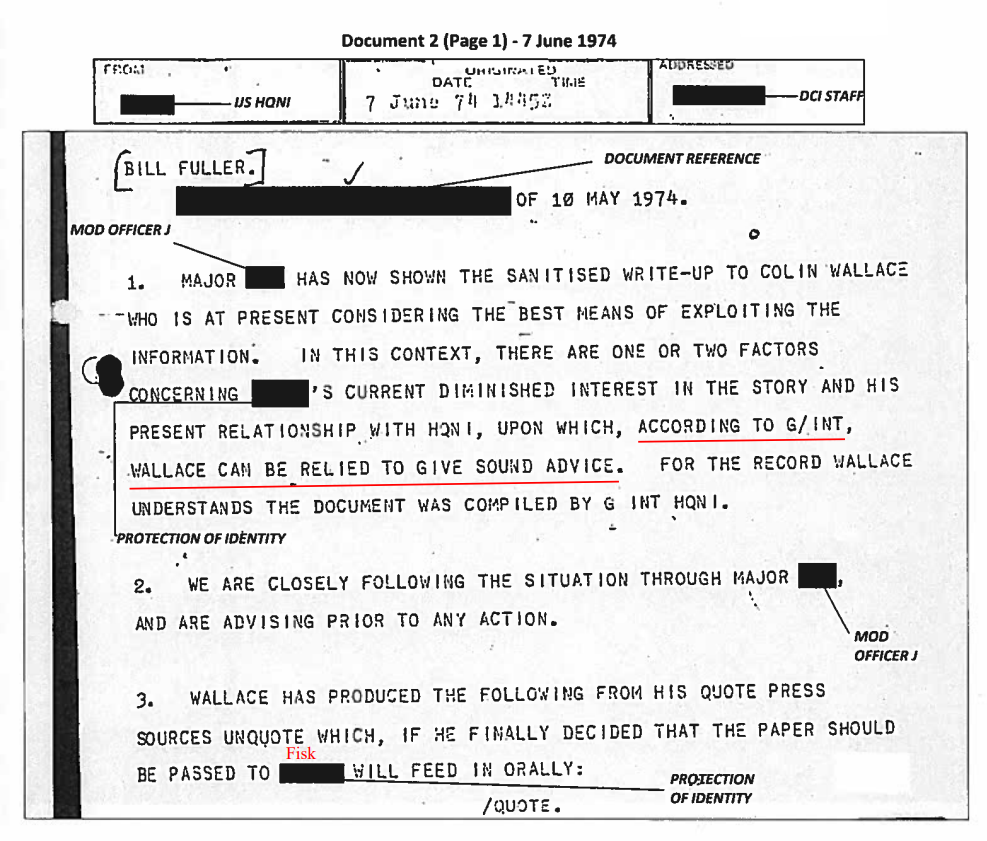
059. Pushing Wallace off the pitch.
Before Cameron plunged his dagger, a move was made – undoubtedly arranged by Cameron – to move Wallace off the pitch without creating too much of a fuss. On Christmas Eve 1974, Wallace was interviewed at the MoD and told that he was being posted from NI to the North West District at Preston, England. He was told this was part of a career move. There was a vacant post in Preston and it required filling immediately.
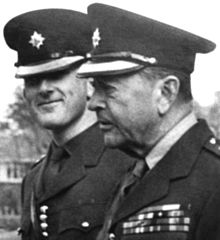
Wallace returned to NI, packed his bags and drove to Preston where he was assigned a room at the British Army’s HQ North West District.
Behind his back, the plot against Wallace was at an advanced stage. The RUC was centrally involved in the conspiracy.
060. The interview at Preston: ‘I think you have been set up by your own side.‘
On his second day at Preston, Wallace was called in by his chief-of-staff and informed that two police officers had arrived to see him. One was the Head of the Lancashire Special Branch, Frank Taylor. The other was Detective Inspector ‘K’ from the RUC. They asked to look at the documents Wallace had brought with him from Lisburn. Those he had were in boxes in his bedroom. The officers searched them but found nothing of interest.
Next, the pair conducted an interview in the chief-of-staff’s office. Taylor was aggressive, the RUC man was not. Wallace explained that he would have to get clearance to talk about some of the work he had undertaken in NI.
Before they left, the RUC officer told Wallace: ‘I think you have been set up by your own side’.
The RUC officer was reporting to David Johnson[12], his superior in the RUC Special Branch. Johnson had directed the surveillance of Wallace during which Wallace had dropped materials to Fisk. While Wallace was doing this as part of his job, it would nonetheless be used as ammunition to justify dismissing him.
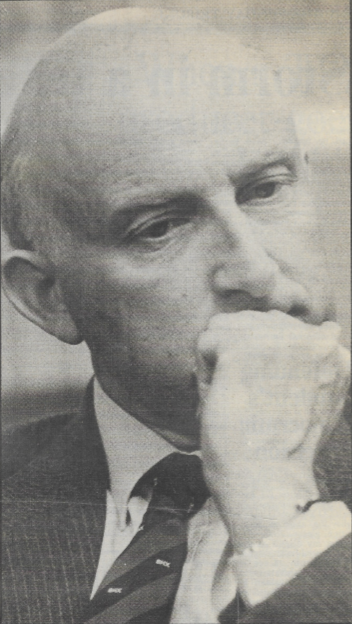
After the meeting, Wallace went to see John Groves, the head of public relations at the MoD in London. Groves told him he could talk to the RUC Special Branch about his covert activities but only about those directed against the IRA, not Loyalists
The fact Wallace was now living in Preston placed him at a significant disadvantage going forward. The secret dimension to his employment by the MoD would soon become of paramount importance. Had he been back in his old office in Lisburn, he could have called in a small army of colleagues to tell the RUC investigators that he had a PSYOPs role. In those days, communications between Preston and NI were primitive. There was no prospect that Wallace would be able to make contact with Lisburn and find a colleague was prepared to talk over an open line to the police in Preston.
Wallace had also been told by MI5 that his life was in danger and he should not return to Lisburn, something which further isolated him. No evidence has ever emerged that anybody had targeted Wallace. The allegation was undoubtedly another lie planted by Cameron.
061. MI5 allegations regarding information ‘leaks’
Cameron’s plot was to pin a series of ‘leaks’ or unauthorised disclosures of information to the press in general, and to Robert Fisk of The Times in particular, on Wallace. Again, the hypocrisy here is staggering as MI5 continued to leak to journalists including Fisk after destroying Wallace’s career.
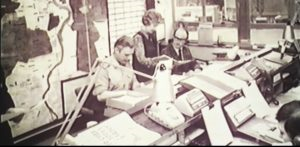
The first of the complaints was that Wallace was responsible for a report that had appeared in The Times of London by Robert Fisk in 1973 about the ‘Blue Card’ being issued to troops in NI instructing them in arrest procedures. That card was classified ‘Restricted’.
Virtually all documents in the Army at this time were classified ‘Restricted’ or higher, even the ‘tribal’ street maps of Belfast. Journalists who visited NI knew that the Army Press Desk at HQ NI gave out copies of the ‘tribal’ map of Belfast as well as copies of the ‘Yellow Cards’ and ‘Blue Cards’ issued to soldiers and containing the rules for arresting people and for opening fire. All of these documents were ‘Restricted’. The notion that the MoD and MI5 were unaware that they were being distributed to the press is risible.

On 19 March 1974, The Times published a story stating that SAS units were operating in NI. That leak emanated from Whitehall where the Government wanted to demonstrate that it was taking robust measures to counter the growing number of IRA operations in rural areas. An MoD inquiry in later years, initiated by the Permanent Undersecretary (PUS) Sir Michael Quinlan concluded ‘there was no evidence at all that he (Wallace) was responsible for the SAS leak.’
On 31 August and 2 – 3 September 1974, Fisk published a series of articles about the British government’s plans to increase the strength of the RUC. It had been mooted that the RUC would recruit police locally on religious grounds. In other words, Catholic officers would police Republican areas and only Protestants, Loyalist areas. Such a strategy was destined to increase the sense of religious segregation. The leak about the proposal was initiated by General Frank King who believed the policy it would cause great harm to the RUC. He also thought that the strategy was probably an initial step by Harold Wilson to disengage from NI.
Next on Cameron’s list was a report that had appeared in The Times Diary on 24 September 1974 revealing that Army units had been requested to report all contact with them during the previous two days. Wallace was not responsible for this either.
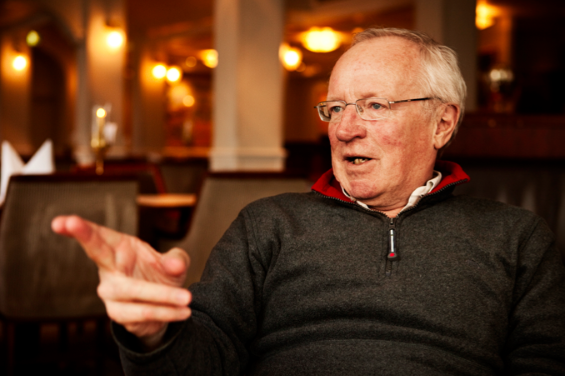
There was one charge against Wallace which can fairly be described as preposterous. It claimed that Wallace had called at Fisk’s home and furnished him with him photocopies of ‘secret’ papers about the UWC strike. What appears to have happened here is that a reporter from the ‘Belfast News Letter’ who knew Wallace gave him some documents which had been passed to him by an official at the NIO. They concerned the UWC Co-ordinating Committee. The reporter assumed that they contained disinformation intended for publication in the press to discredit the UWC strike. The journalist gave Wallace a copy of the documents because they contained criticisms of the way in which the Army had been handling the UWC strike. Wallace passed a copy of the documents to his superiors, who agreed that he should draw the attention of appropriate journalists to them to highlight that they were disinformation. It is likely that he gave a copy of these documents to Fisk and other reporters. The supreme irony here is that the documents were fictitious and therefore could not have been deemed ‘classified’. The MoD, NIO and MI5 have never been able to identify the documents as official papers.
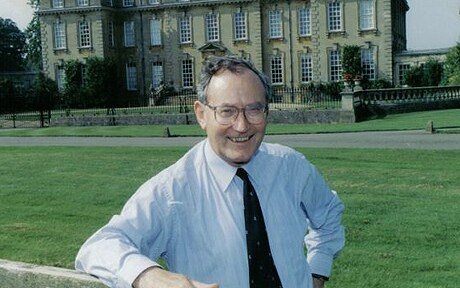
A subsequent report initiated by Sir Michael Quinlan of the MoD in 1989 referred to this matter and commented: ‘the problem over this incident was that no-one knew what these secret papers were’. It went on to say:
It is, of course, quite possible that the ‘secret papers’ were not classified SECRET and that they may not have been that damaging. That seems on the whole to have been Sir Frank Cooper’s view.[13]
The final complaint related to a report which was published on 5 December 1974 by Fisk in The Times about computer-linked observation posts which had been installed beside the main roads in NI. Fisk told Wallace that he had obtained the information from someone who worked in telecommunications. Wallace subsequently passed details of that ‘leak’ to a senior officer in Army Intelligence at HQNI to prevent the further seepage of information from this source.
062. Dirty tricks, smears and absent witnesses.
During the masquerade that purported to be a RUC investigation into Wallace, Peter Broderick, who worked with him on PSYOPS, told Det. Insp Cooke of the RUC that Col Geoffrey Hutton was Wallace’s PSYOPS line manager. Yet, the RUC never interviewed Hutton. (Nor did the Hart inquiry which issued its report 2017).
The MoD terminated Wallace’s employment on disciplinary grounds. Wallace appealed. He had no inkling that the most senior official – bar nobody – at the MoD and the D-G of MI5, Sir Michael Hanley, were participating in a conspiracy against him.
063. James Dunnett and Michael Cary of the MoD.
The position of Permanent Undersecretary (PUS) at the MoD, i.e., the figure in charge of the ministry, has always been one, if not, the most sensitive posts in the British civil service. The PUS had access to details of Britain’s most up to date military and scientific data, not to mention the nation’s battle plans. The officeholder is heavily vetted and scrutinised by MI5. In the wake of the Cambridge Spy ring debacle which featured two homosexuals, Guy Burgess and Anthony Blunt, MI5 became obsessive about the sex lives of civil servants with access to NATO, nuclear and other secrets, especially homosexuals.

The PUS at the MoD, 1969-74, was Sir James Dunnett. Infamously, he paid underage male prostitutes he picked up at Piccadilly Circus – ‘Dilly Boys’ – for sex. His reputation was shattered by his involvement with Vicky de Lambray, a transvestite male prostitute who stole his cheque book. De Lambray was put on trial in March 1983, for the theft, instantly igniting a media frenzy during which Dunnett’s name was made public.
It is impossible to imagine that the Metropolitan Police and MI5 did not know that Dunnett was an abuser of Dilly boys. That would mean that his bodyguards and the bobbies on the beat who sometimes arrested the men who preyed on the Dilly boys, never once spotted him lurking around Piccadilly Circus. The area was in the centre of London and the activity of the rent boys was conducted with little discretion.
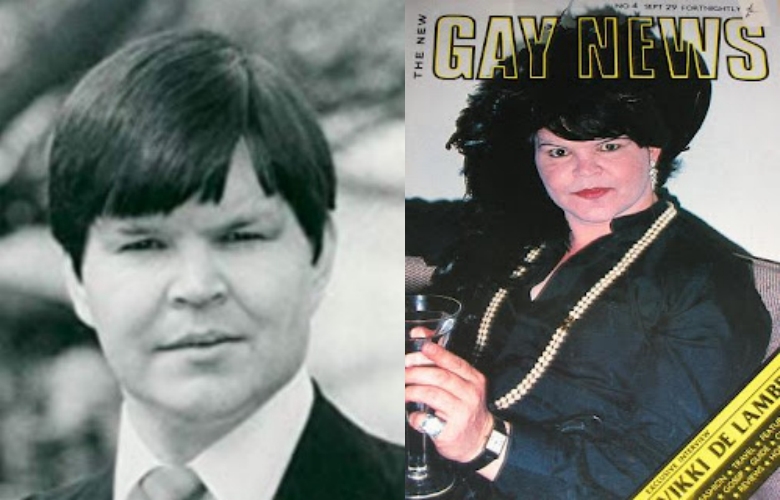
Had any of the various Soviet intelligence services in London discovered his weakness, it would have opened him up to blackmail.
It is likely MI5 knew about Dunnett’s nocturnal habits. It is not inconceivable that they approached him, let them know what they knew, and told him they would not expose him, but that he would have to contact them immediately if anyone tried to blackmail him.
Dunnett served as PUS during part of 1974 and may have been involved in the plotting against Wallace. What is certain is that his successor became a key figure in the campaign to destroy Wallace.
Dunnett’s successor was a man called Michael Cary who ran the MoD, 1974-76. His record shows that he was deferential towards MI5 although it was attached to the Home Office, a separate department. His deference is evident from a letter he sent to the D-G of MI5 which will be examined in the next section. Why he jumped so readily to MI5’s tune is a mystery.
The worst-case scenario is that MI5 did not have ‘kompromat’ with which to blackmail him and he was fully aware of {i} the rape of children at Kincora, Willliamson House, Bawnmore and elsewhere and {ii} the value of this to MI5 and {iii} the existence of collusive assassination programmes, and was prepared to assist MI5 maintain these operations by destroying Wallace, an innocent man.
064. The letter to the Director-General of MI5, Michael Hanley.
Cary wrote a letter on 11 December 1974. It reveals malfeasance in public office and fraud on his part. He sent it to the Director-General of MI5, Michael Hanley. It describes a meeting he had just had with Jock Shaw. Shaw was the person who was going to chair Wallace’s appeal against his dismissal.
The letter outlines how Shaw was prepared to reject the appeal without hearing both sides of the argument.
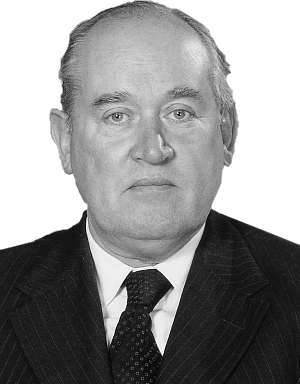
The letter from Cary to D-G Hanley is worth reciting in full so that its deeply mendacious nature can be absorbed.
Colin Wallace
As you know, Colin Wallace has now been informed that he is to be dismissed and has told us that he intends to appeal. The next stage is that Wallace must present his case in writing to the Civil Service Appeals Board, who will forward it to the Department for comment and reply. (Our reply will be shown to him). There will probably then be an oral hearing. Wallace appears for the moment to have abandoned his idea of briefing a solicitor and has gone instead to the ‘IPCA’s, who have I understand agreed to help him even though he is not a member.
In anticipation of this, I had a strictly private and personal word yesterday with Jock Shaw, the Chairman of the Civil Service Appeals Board. I started out by:
a. Rehearsing the charges against Wallace.
b. Outlining in the most general terms Wallace’s connection with ‘information policy’ in Northern Ireland.
c. Explaining that both the circumstances and the nature of the man made it possible that the hearing would be attended by damaging publicity.
I went on to say that I had asked Jock for this meeting for two reasons. First, while we had no wish to embarrass him by pressing on him information which did not relate strictly to the charges and would not be used in ‘open court’, the fact was that, as he had no doubt realised, the formal charge was merely the tip of the iceberg and, if he would find it useful, I would be prepared to consider arranging for him to have a briefing on the general background to the case. I added that the decision was not up to me since other Departments, such as the NIO, were involved but that if he were interested I would see what could be done.
Secondly, I said that I wanted to ask his advice about how the hearings should be handled in order to minimise the risk of publicity.
Jock Shaw, whose background in personnel security work enabled him without difficulty to read between the lines, reacted very helpfully indeed. On the first point, he said that it would undoubtedly be of assistance to him if he were able to be fully briefed on the background. As to the second point:
a. He said it was open to him to choose his two fellow Assessors. He had it in mind to pick those whom he had used for the [Redacted] hearing. Not only in his opinion where they are absolutely reliable, but also, and from our point of view even more important, he felt that if he, having been briefed on the background, asked them to take his word on its significance and relevance, they would do so.
b. He said that there was no formal understanding about hearings ‘in camera’, the problem never having arisen so far, but remarked that the Press had been excluded from the [redacted] hearing in which they had shown some interest. He offered to discuss this point further with [redacted] at the CSD. (I said that this would be very helpful).
c. He pointed out that because [redacted] had threatened to use the documents produced at the hearing in a book he was writing, legal arrangements had been made to limit the use of the documents to the appeal only. I doubt if this will be of much help to us, since our main worry is unattributable stories, but it may be worth bearing in mind.
The purpose of this letter then is to secure your agreement, and Frank Cooper’s, to briefing Jock Shaw on the background to this case. What I have in mind – and he agreed – was that we should put together a dossier of the key documents and allow him to sit in a corner of my office and read it. He would not take the documents away, nor would he wish to (though it would also be most helpful if you could make available your Case Officer to answer any supplementaries).
The dossier should, I suggest, consist principally of the following items
a. Frank Cooper’s letter to Douglas Allen of 25 September 1974 setting the investigation in train.
b. Frank Cooper’s letter to me of 11 December 1974, together with the associated Security Service report and the report from [Redacted].
c. The sensitive report of the exchange between Fisk and Wallace on 4 February 1974.
d. The HQ NI report prepared for Bernard Charlton and forwarded to me by the GOC and 15 April.
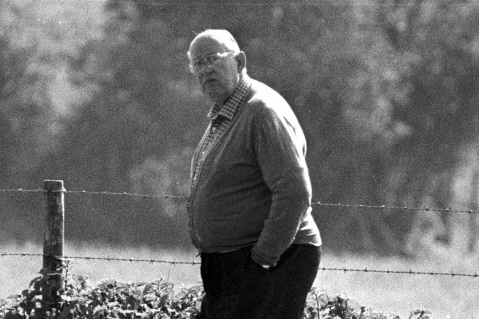
This approach may appear somewhat unorthodox but nonetheless there does seem to me to be a strong case for giving Jock Shaw access to the background in order to satisfy him that the Department’s actions were not, as might be concluded from the overt facts of the case, an over-reaction to what could at its most serious be described as an individual error of judgement, but rather that it was the final step in a series of events which convinced us that, whatever Wallace’s motives, we could no longer continue to employ him in public service. Conversely, I think there are virtually no risks involved. Certainly, insofar as the documents lie within my discretion, I am completely happy to act in this way. Jock Shaw is absolutely trustworthy and the information would not go beyond him. (I should say here that I hope everyone concerned will respect Jock Shaw’s confidence in the meeting which, to use his own words, ‘did not of course take place’).
After Jock had returned to his office, he rang my Private Secretary to let us know that Wallace’s letter to the CSAB stating his intention to appeal had now arrived and that, in his view, there would be merit in acting as quickly as possible.
I should be glad to discuss with you and Frank Cooper should you wish.
065. The smear Wallace was in the UVF.
An ingredient in MI5’s plot to destroy Wallace was to portray him as a UVF terrorist. According to Peter Broderick
A few days before Wallace’s appeal, the chief of public relations for the MoD in London spoke to me on the ‘phone. He told me: ‘You know this Wallace chap is an active member of a militant volunteer force. He is an active terrorist, a member of the Ulster Volunteer Force.’ The suggestion was laughable – that sort of thing would have been known about. It simply was not true.[14]

Broderick also revealed that John Groves, his boss in London, told him that this was the ‘real reason we want him out of the way’:
He told me that the charge of leaking the document to a journalist was ‘just a convenient way’ of getting rid of him. The clear implication was that I should bear this in mind when I spoke at the tribunal.
When asked about this in February 1990 by the Observer Newspaper Groves,[15] said:
I have never heard of this before. It sounds like something Colin Wallace might invent; those two [Broderick and Wallace] got on rather well together.
The real reason for the destruction of Wallace’s career was, of course, because he was trying to expose Kincora and would not cooperate with the more excessive aspects of Clockwork Orange, namely the smearing of mainstream politicians including members of Westminster. He also had a shrewd idea that MI5 was involved in tearing down the NI Power Sharing Executive.
After his dismissal in 1975, Wallace wrote to his former boss at HQNI. The letter referred to homosexual prostitution at a children’s home in Belfast’. The relevant extract reads as follows:
066. An unethical solicitor.
Other smears may have been circulated. They certainly were later. A minute sent by the staff of MI5 at the NIO to Bernard Sheldon, MI5’s Legal Adviser, on 29 November 1990, alleged that Wallace had a ‘closer and occasionally more clandestine’ relationship with Robert Fisk of ‘The Times’ ‘than with other journalists’. That was not true.
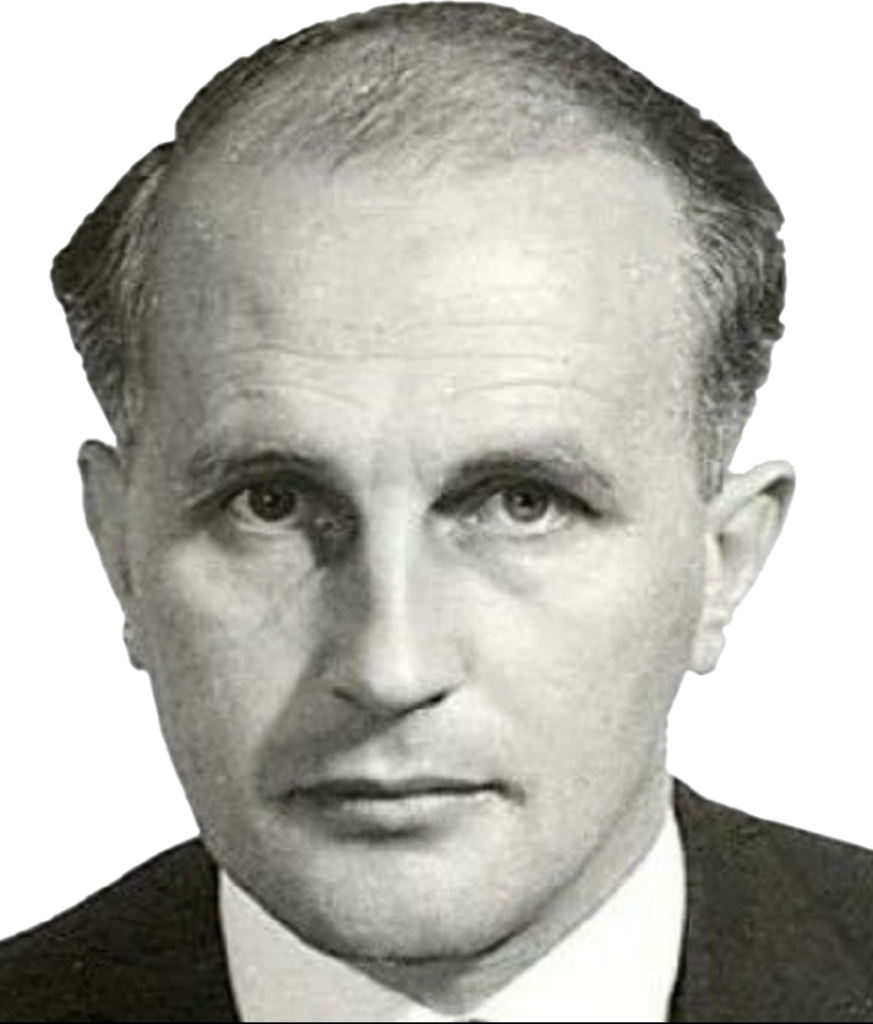
Sheldon was one of those to whom a copy of the letter from the PUS at the MoD, Michael Cary, to Hanley was sent. He knew that the case against Wallace was entirely bogus.
067. ‘.. linking the MPs with Loyalist paramilitary figures involved in homosexual prostitution at a children’s home in Belfast’.
After his dismissal in 1975, Wallace wrote to his former boss at HQNI. The letter referred to ‘homosexual prostitution at a children’s home in Belfast’. The relevant extract reads as follows:
My concern now is that there may be an attempt by the Ministry [of Defence] to deny any form of official ‘dirty tricks’ organisation existed within the Security Forces. For example, in the Ministry’s summary of my oral representations made [at an employment tribunal] to John Groves and Mr Fairbairn on 10 May reference is made in paragraph 3 to ‘actions’ which I was asked to launch during the [1974 Ulster Workers Council anti-power-sharing] strike. The word ‘actions’ appears to have been used by MOD to conceal the fact that I referred to the attempts made by the Security Service [i.e. MI5] to discredit various Loyalist politicians, including the Rev Ian Paisley [of the DUP], by the use of forged documents and by linking the MPs with loyalist paramilitary figures involved in homosexual prostitution at a children’s home in Belfast.
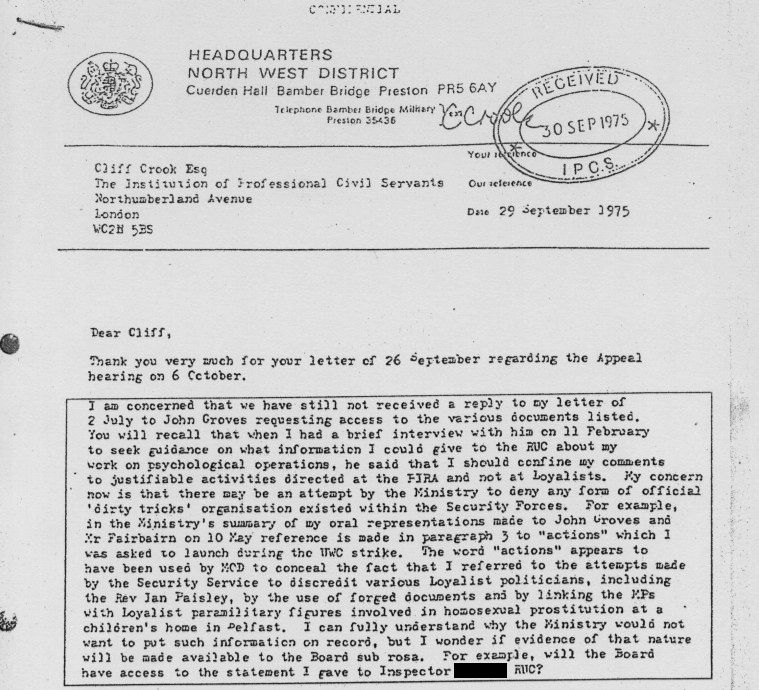
068. Wallace’s Clockwork Orange notes and a reference to ‘a prostitution ring supplying boys to hotels in Belfast and Bangor’.
Wallace has other documents to prove his case.
Wallace was asked by MI5 to assist Operation Clockwork Orange. Towards this end, he was provided with information which he recorded in his notebook. Forensic examination has proven that his notes are authentic. In December 1974 Wallace recorded the following:
Joseph Mains may be extensively involved in a prostitution ring supplying boys to hotels in Belfast and Bangor. The hotels include: Girton Lodge, Park Avenue; Stormont; Europa and the Queen’s Court in Bangor. [John] McKeague is said to use the Royal Avenue Hotel for the same purposes. Bearing in mind that the East Belfast UDA leadership use the Girton Lodge and the Park Avenue for their meetings, it is simply [not] credible that they did not know what is going on there. Note: Mains has a brother in the RUC. He also has a questionable relationship with Belfast Corporation Welfare Chairman (Cardwell) and Legal Adviser (Young).
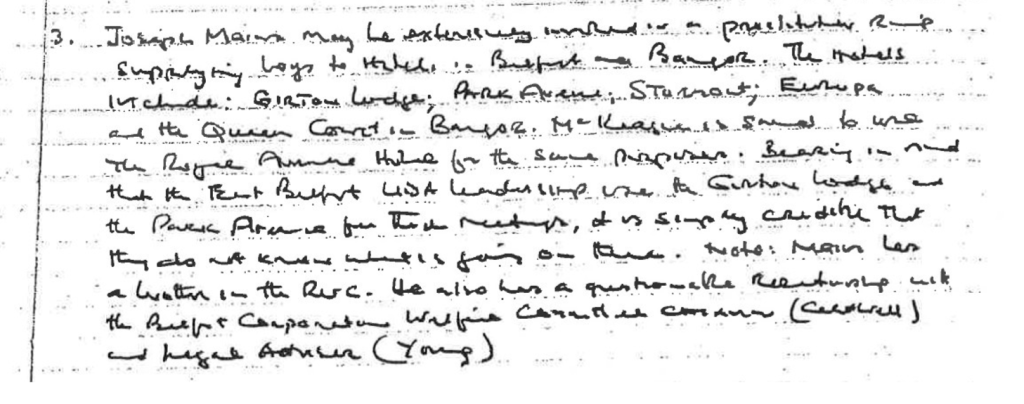
Wallace’s Clockwork Orange notes and his September 1975 letter were furnished to the Hart Inquiry which produced a report in 2017. Judge Anthony Hart who led the inquiry clearly did not appreciate the significance of either. On their own – and at a minimum – they confirm that MI5 knew about the existence of a paedophile network involving Joseph Mains and John McKeague in Belfast and Bangor five years before it was exposed in the Irish Independent in 1980, yet did nothing to interfere with it. On the contrary, they continued to exploit it.
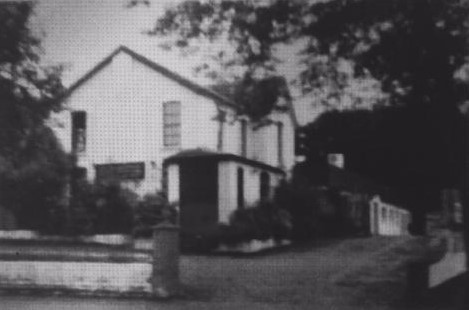
069. Checkmate.
On 17 October 1975, Wallace’s appeal came before Jock Shaw’s bent Civil Service Appeal Board (CSAB) at the MoD in London.
Some of Wallace’s superiors stood by him including those who worked in the overt public relations department of the British Army. Peter Broderick, the former Head of the Army Information Services told the appeal hearing that:
I do not hesitate to say that Colin Wallace is the best thing that ever happened to Army Public Relations in Northern Ireland; that if it had not been for his talents, knowledge and efforts the Army could well have lost the propaganda war; and I could not wish to meet anyone more dedicated to the Army than he was and, so obviously, still is. He acted resolutely and to effect against anyone – republican or loyalist – who was destroying his country.
This was, however, never going to be enough to cut the mustard as Jock Shaw and his two hand-picked accomplices were merely going through the motions and had no intention of conducting a fair and transparent hearing.
Lt Colonel Jeremy Railton, the number two figure in the PSYOPS unit at HQNI, was meant to attend the hearing in London at the MoD. Wallace was represented by Cliff Crook, an assistant secretary of the Institute for Professional Civil Servants. He recalled:
We were all awaiting [Railton’s] arrival and then we were suddenly told that, due to an apparent lack of military precision, he had missed his plane, something to do with Belfast airport being fogbound. It was a gloriously sunny day on the mainland.
Few knew better than Railton that the charges against Wallace were a tissue of lies because it was he who sanctioned Wallace to disseminate information to journalists. He also knew about Kincora and the links to the murder of Brian McDermott because Wallace had presented him with a report on these and other issues in November 1974. It is not clear why he went along with the plot against Wallace. Put simply, his connivance in the plot against Wallace ensured countless children were raped and abused for years to come.
The tribunal decided that Wallace’s dismissal would be upheld but gave him the opportunity to resign and thereby save a little face.
It would provide some respite from this litany of deceit to imagine that Hanley and Cameron threw this tiny morsel at Wallace because they had guilty consciences. It is, however, equally likely that they had other, less altruistic, motives. Without the stain of dismissal on his CV, Wallace would be able to secure a job elsewhere. While seeking alternative employment, it would be very much in his interest to conceal the trouble he had just experienced. Also, it meant that if he secured a job, his time would be occupied and he would be less tempted to brood about what had happened to him. Overall, this meant he would be less likely to talk to his contacts in the press, of whom he had many.
070. Wallace is described by Sir Frank Cooper, the top civil servant at the NIO, as a festering boil’
The tribunal decided that Wallace’s dismissal would be upheld but gave him the opportunity to resign and thereby save a little face.
It would provide some respite from this litany of deceit to imagine that Hanley and Cameron threw this tiny morsel at Wallace because they had guilty consciences. However, other less altruistic, motives were at play. Sir Frank Cooper, the PUS at the NIO referred to Wallace as a ‘festering boil’. The comment was recorded by J. P. Waterfield of the NIO in a ‘NOTE FOR FILE’ dated 25 May 1976. He recorded Cooper’s view that:
4. The key to this festering boil, is, as Sir Frank Cooper said yesterday, for Wallace to get a job. The difficulty is that any job which requires PV (positive vetting) is clearly out. Nor would it be acceptable for him to come to NI in any quasi official capacity.
Suffice it to say that without the stain of dismissal on his CV, Wallace would be able to secure a job. While seeking alternative employment, it would be very much in his interest to conceal the trouble he had just experienced. Also, it meant that if he secured a job, his time would be occupied and he would be less tempted to brood about what had happened to him. Overall, this meant he would be less likely to talk to his contacts in the press, of whom he had many.
071. Fisk publishes a report about Tara.
On 19 March 1976 Fisk wrote a short piece about Tara in the New Statesman. Fisk described the ‘army’s account of their [i.e. TARA’s] activities collated by an intelligence officer at Lisburn’ [i.e. Wallace].
It is clear from a glance at the article that it was based on the 1973 Tara press briefing in which McGrath was described as a homosexual blackmailer.
Cameron was sufficiently alarmed by Fisk’s article, that on 22 April 1976 he sent a report about it to MI5’s HQ in London.
Cameron’s report was addressed to ‘Box 500’, a coded reference to MI5.
1. In an article in the New Statesman and team March 1976 about the extreme Loyalist organisation TARA (copy attached marked A) Robert FISK refers to ‘the Army’s account of their activities collated by an intelligence officer at Lisburn’.
2. The reference is almost certainly to a summary on Tara (held in the AIS records at HQNI. The information in the summary was no doubt drawn from G (Int) files at a time when the IP [Information Policy Unit] element within the AIS was working closely – too closely! – with G (Int).
3. WALLACE would have had access to the AIS file and I do not think there is much doubt that, also in this instance, he was Fisk’s source.
4. The passages which have been underlined had been published in one form or another, previously.

072. Keeping the NIO Minister in the dark.
In 1975, Wallace and his solicitor met with his Member of Parliament, Roland Moyle. At the meeting, Wallace shared various documents with Moyle, including the Brian McDermott Child Murder Memo of November 1974.
Moyle was not merely Wallace’s MP, he was also a minister in the NIO, 1974-76.
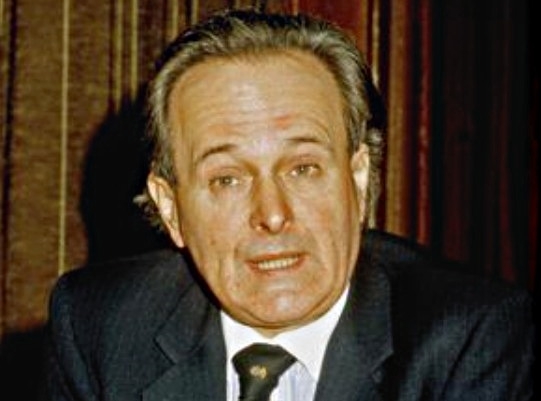
Hence, a senior government minister came into possession of papers which revealed that children were being abused and a child killer – the man who murdered Brian McDermott – was at large in NI.
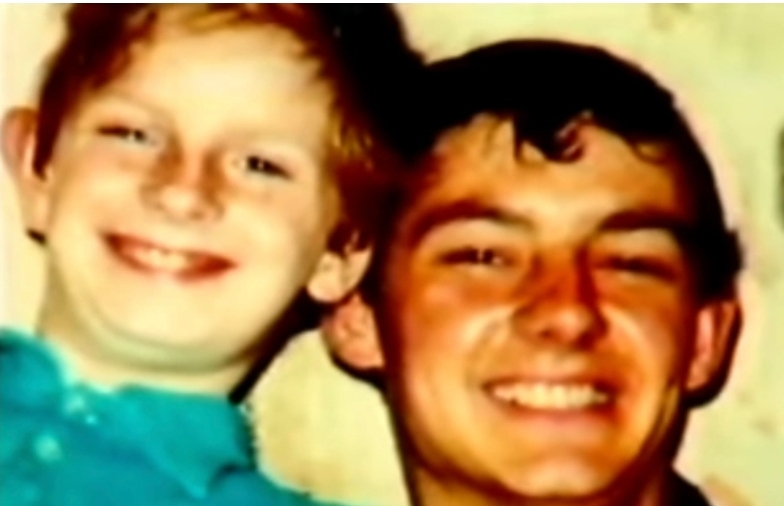
The most senior officials at the NIO and MoD were alarmed at the contact between Wallace and Moyle. On 13 May 1976, the NIO wrote to Ewen Broadbent at the MoD. The letter was copied to the DCI in NI. It read as follows:
Dear Ewen,
Following our talk, and my consultations with the FCO and within NIO, may I send you as you are away today, the enclosed “Note by NIO” of the position as we see it with our recommendations, and attached draft speaking notes which we advise that Sir Frank Cooper should use at the earliest opportunity with Mr Moyle.
2. We would prefer that your PUS did not go as far as is set out in the first part of para 8 of the speaking note unless this is absolutely necessary to convince Mr Moyle. But we must leave it to your PUS to judge in the last resort what is necessary. The speaking note has been seen and agreed as drafted by the Head of the (DCI staff) in NIO.
3. For obvious reasons the papers are being held on a very restricted basis within NIO. Our PUS [at the NIO] is now generally aware of the case and is aware that I am writing to you. If any practical questions arise in my absence in Belfast until next Tuesday (redaction) is the best point of contact and could explain how I could be reached in Belfast at any time.
4. I apologise for any trespass on MOD’s internal affairs in these papers, but I thought it might be helpful if I had a first shot, as a basis for any subsequent discussion. I am only too well aware that there may well be points involving MOD responsibility which you will want to correct.
5. Because of our vital interests, perhaps you would be good enough to consult NIO if any variations on our advice are proposed. In any case we would be grateful to be kept informed.
6. I might add that Mr Moyle has not said anything about his discussion with Frank Cooper in NIO, nor are we proposing to say anything to him.
Unfortunately, the MoD did not spell out the nature of its ‘vital interests’. A safe guess is PSYOPs, the McDermott murder, knowledge of McGrath’s sexual proclivities and military collusion with Loyalist paramilitaries.

On 25 May 1976, J. P. Waterfield of the NIO wrote a ‘NOTE FOR FILE’ which recorded the steps the NIO was taking to keep Moyle in the dark.
I have now learned from [DCI redacted] that the information which Sir Frank Cooper said yesterday [the] MOD had received about Wallace being in touch with the Daily Mirror was specifically something which Mr [Chris] Ryder of the Sunday Times had mentioned to an Information Officer at HQ NI. The information amounts to no more than Mr Ryder’s understanding (how we do not know) that Wallace’s is believed to have been in touch with the Daily Mirror with a view to a story.
2. I also understand (redacted) that Wallace has been considering whether, if it gets no change from Mr Moyle, he should approach the Secretary of State with a view to asking for his help.
3. We are continuing to say absolutely nothing in NIO to Mr Moyle and I did not mention it when seeing him on other matters at some length this morning.
4. The key to this festering boil, is, as Sir Frank Cooper said yesterday, for Wallace to get a job. The difficulty is that any job which requires PV (positive vetting) is clearly out. Nor would it be acceptable for him to come to NI in any quasi official capacity.
5. Sir Frank Cooper is going to take the next steps with Mr Moyle on the lines agreed. Meanwhile, we should continue to say nothing to Mr Moyle, nor will we say anything more to the Secretary of State who was acquainted with the story at the time of Wallace’s dismissal but has not been involved since.
Ryder’s report to the ‘Information Officer’ was wrong. Wallace had not approached the Daily Mirror or any other newspaper.
If Moyle read the papers submitted to him, he failed to act upon them.
On 14 April 2015, Colin Wallace wrote to Tam Dalyell MP responding to several questions he had posed. In one of his replies, Wallace said:
I later provided my solicitor with a copy of the handwritten version of the November 1974 memo which I had in my possession at the time I briefed my London solicitor, Graham Dodd (Blackheath), prior to meeting with Roland Moyle MP in 1975. I did not have a typed version of the memo in my possession at that time. The handwritten memo was one of several documents in had in my possession in preparation for my disciplinary appeal hearing in 1975.
If Wallace was a liar, he would hardly have exposed himself to an unnecessary denunciation from Moyle by fabricating such a response. When asked about the issue in 1990 by Archie Hamilton MP and a minister at the MoD, Moyle said he recalled being approached by Wallace but not the substance of the approach. Moyle died in 2017.

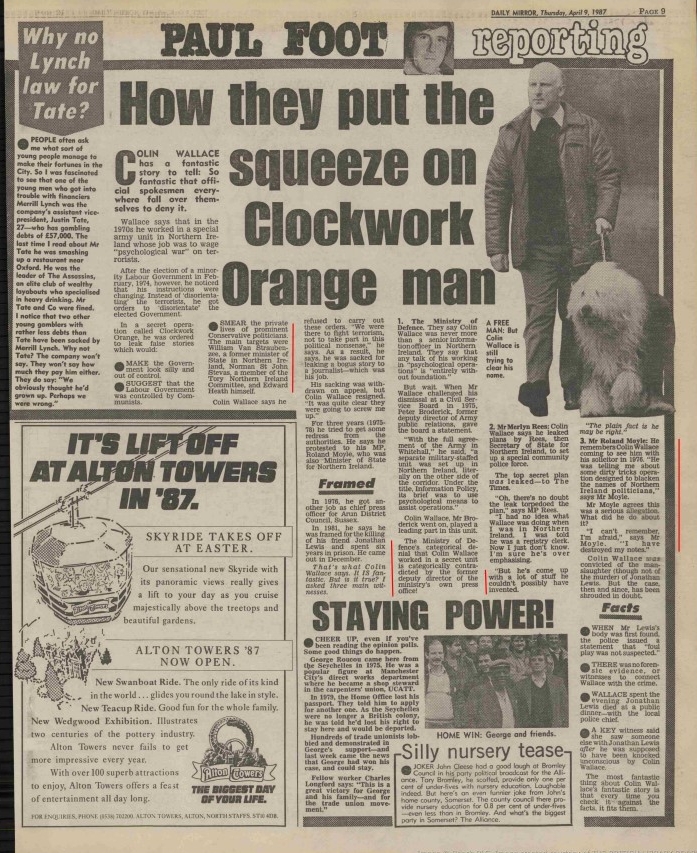
Chapter 6.
Men of God: Ian Paisley, William McGrath, John McKeague and Alan Campbell.
073. William McGrath was a mentor to Ian Paisley.
In 1976 Ian Paisley traced Colin Wallace in England and quizzed him about the smear campaigns which had been run against him.
A lot of Paisley’s trouble was connected to his long standing close ties to William McGrath. Paisley first met McGrath when he – Paisley – was 22 or 23, in 1949 through his involvement in the Unionist Association in the Shore Road area of Belfast. Paisley had moved into the locality to study at a bible college.

In later years, Paisley visited McGrath at Kincora. He did even after he had been told by one of his Church staff in 1973 that McGrath was a paedophile.
One of the former residents at Kincora, James Miller, who was at the home between 1976 and 1978, told the Hart Inquiry on 8 June, 2016, about these visits. Miller thought it ‘just seemed strange that [Paisley] was so friendly with Mr McGrath, you know”. [Day 210 page 75.]
After the eruption of the Kincora scandal in 1980, Paisley would pretend to have difficulty even remembering who McGrath was.
Had Paisley wanted to expose the Kincora scandal – and there is no reason to suppose that he did – his hands were tied behind his back because of what McGrath knew about him, especially the bombings carried out during the campaign to unseat Capt. O’Neill as Stormont prime minister.
Paisley was nearly ten years younger than McGrath. The older man became a mentor to the young Paisley. McGrath perceived the Catholic Church as the instrument of the Antichrist and was determined to expunge it from the four corners of island of Ireland so that the Protestant community – which he believed was descended from the Tribe of Dan of Caanan, one of the Lost Tribes of Israel – could prevail. He perceived himself as a soldier in what he called the ‘battles of the Lord’. His self-anointed duty was to prevent the Pope ‘enslaving the people of God’, not just in Northern Ireland but throughout Britain.
Paisley came to share these views
074. Paisley was also an associate of John McKeague.
Paisley and McGrath also knew John McKeague. The trio went back a long way: McKeague had once served as Paisley’s bodyguard; McGrath was often at Paisley’s side.
Paisley would be haunted by his association with them until the end of his life in 2014. To his last breath, he would maintain he had not known about the abuse at Kincora before it was finally exposed in 1980.

Belying this, in October 1973 Valerie Shaw, a member of Paisley’s church, informed him that McGrath was abusing children at Kincora. Paisley fobbed her off with empty promises to do something about it but failed to act. She denounced him in public in 1982.
Nonetheless, through a combination of bluster and compromised inquiries, Paisley weathered the Kincora storm.
075. A rolling maul of Loyalist organisations.
Throughout his career Paisley was involved with a bewildering array of Loyalist organisations. The names of the groups matter little. However, the paramilitaries in them – who were also in Paisley’s orbit – are significant. They included:
• William McGrath, paedophile, member of Orange Order, Tara, UCDC; British agent and housefather at Kincora;
• John Dunlop McKeague, paedophile, sadistic torturer, serial killer, member of UCDC, UPA, UVF and Red Hand Commandos;
• Gusty Spence, Leader of the UVF; imprisoned in 1966 for the murder of Peter Ward, a Catholic barman in 1966. Forged an alliance with McKeague’s Red Hand Commandos in the 1970s;
• Billy and Eddie Spence (brothers of Gusty Spence);
• Noel Doherty, member of Orange Order, UPA, UVF, Orange Defence Committee and editor of Paisley’s Protestant Telegraph. He used to refer to Paisley as “our Moses”;
• Billy Mitchell, UPV, Tara and UVF.
• Alan Campbell, a leader of the Shankill Defence Association (SDA – forerunner of the UDA), and a member of Tara

076. Paisley and Noel Doherty.
In 1966 Paisley and Noel Doherty instigated the Ulster Constitution Defence Committee (UCDC). Concealed inside it, they organised a paramilitary branch, the Ulster Protestant Volunteers (UPV) which included former B Specials, McKeague, McGrath and Mitchell, and probably Alan Campbell.
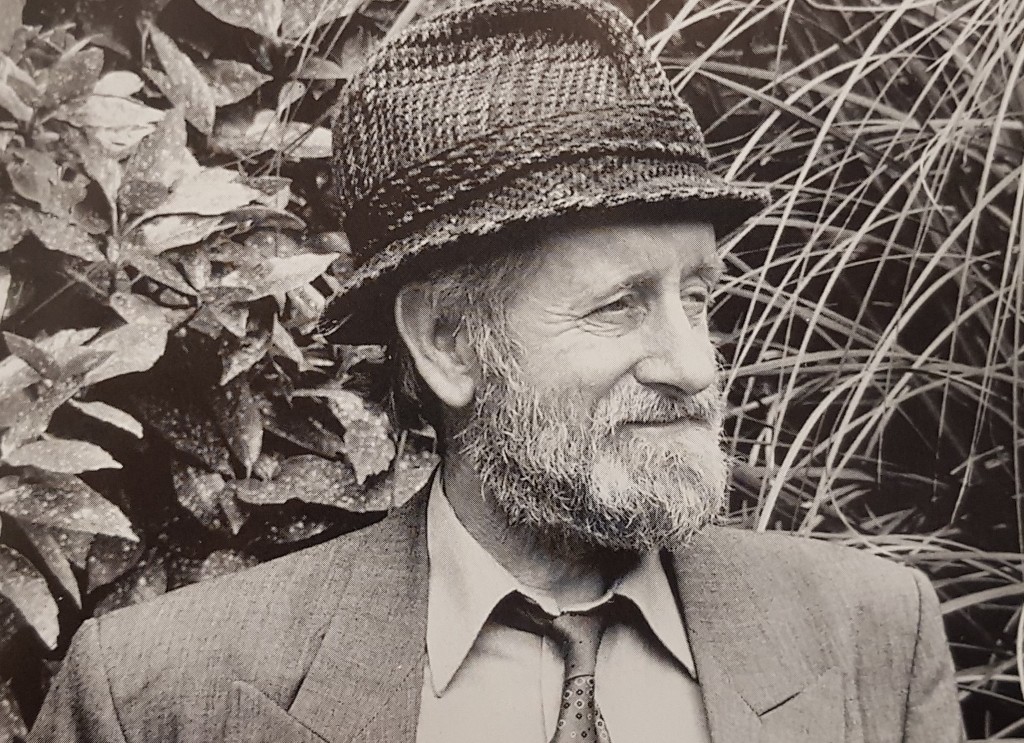
Doherty became leader of the UPV. Under Paisley’s instructions, he was charged with setting up ‘cells’ throughout Northern Ireland, and acquiring arms.
A printer by trade, Doherty also oversaw the establishment of Paisley’s Puritan Printing Press, which produced Paisley’s literature, including his newspaper, the Protestant Telegraph.
077. Paisley’s plot against bridge building NI Prime Minister Terence O’Neill
In 1968 the Stormont prime minister of Northern Ireland, Captain Terence O’Neill, tried to persuade his fellow Unionists that if Catholics were given houses, jobs, cars and televisions, they might accept Stormont, and Partition would become permanent. ‘He is a bridge builder, he tells us. A traitor and a bridge are very much alike for they both go over to the other side’, Paisley thundered in response.
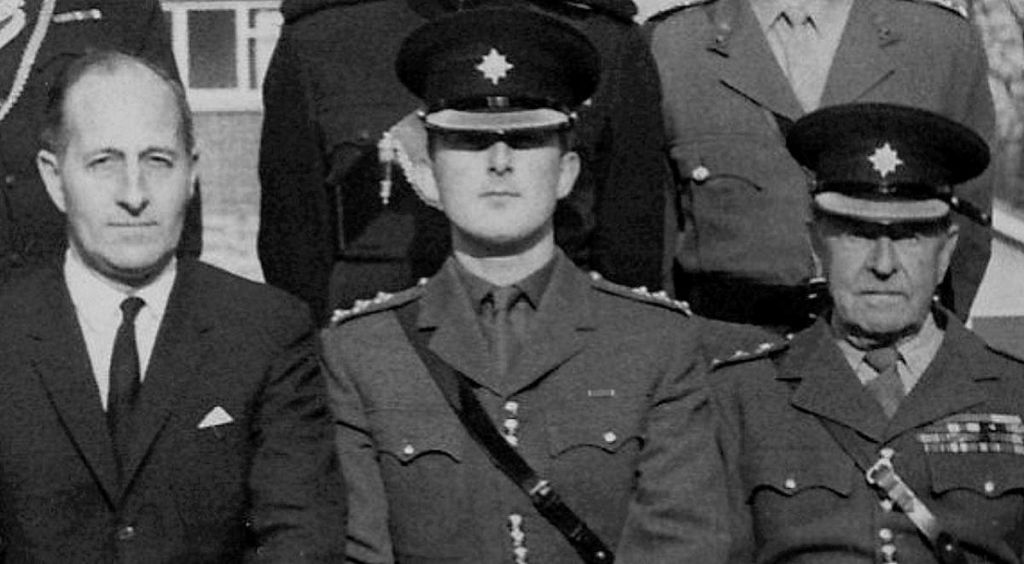
The animosity between Paisley and O’Neill dated back to the start of O’Neill’s premiership in 1963. He had sinned grievously in Paisley’s eyes by seeking a rapprochement with the Republic. Paisley, Noel Doherty, the Spence brothers, McGrath and McKeague would become the protagonists in a clandestine plot to topple him.
078. Paisley, the UPV and UVF.
The long-defunct UVF reformed in the 1960s. It became part of the plot to topple O’Neill.
On 21 April 1966, Paisley took Doherty and Billy Mitchell to meet a Loughgall farmer, James Murdock. It was later alleged that Paisley left the meeting to attend another one in Armagh, and that during his absence the three others discussed the supply of arms and explosives to the UPV.
In 1968 Noel Doherty was tried on bombing charges, convicted and sentenced to two years. On the day of his imprisonment, Paisley made a speech outside the prison in which he denied all knowledge of Doherty’s offences before announcing that he was forthwith expelled from the UPV and the UCDC.
The UVF also publicly denied that Doherty was one of its members.
079. Paisley and the explosives at Lurgan.
Contrary to Paisley’s posturing at the time, there are grounds to suspect he had been involved in the anti-O’Neill bomb campaign.
Before his imprisonment, Doherty and Billy Mitchell had been introduced to James Marshall, and a supply of explosives from quarries in Lurgan had been secured. The explosives would be used to cause explosions at a Castlereagh electricity station, Silent Valley Reservoir and another electricity station at Ballyshannon in County Donegal. The most intense period of UVF/UPV violence took place between 30 March and 23 April 1969. McKeague was deeply involved.
The objective of the bombing campaign was to make it look as if the IRA was responsible for it and thereby undermine O’Neill’s authority. The bomb plotters wanted the public to believe that the IRA had smelt blood in the weakness of O’Neill’s moderation. O’Neill resigned on 1 May, 1969. ‘Either we live in peace or we have no life worth living’, he told his party. These were prophetic words.
080. McGrath and Paisley meet the new PM.
An indication of McGrath’s importance to Paisley at the close of the 1960s can be demonstrated by the fact he was at Paisley’s side during the early hours of 14 August, 1969, after the eruption of the Battle of the Bogside in Derry. Paisley led a delegation to see the new premier, Major James Chichester Clark, who was monitoring events at the RUC’s HQ at Knock in Belfast. One of the delegation, Roy Garland, commented in 1982 that it was surprising that ‘at the height of this violence McGrath, Paisley, myself and a man called Black from Armagh were talking to the Prime Minister, Major James Chichester-Clark about it…We were demanding that the B Specials be mobilised and a ‘People’s Militia’ be formed’. Chichester Clark, however, was not interested.
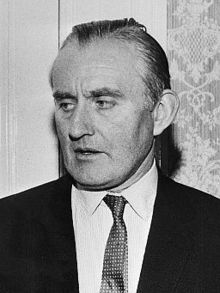
Meanwhile, McKeague was leading rioters, arsonists and looters in a hate-filled rampage against Catholic homes in Belfast.
081. Paisley’s hushed whisper.
Paisley, McKeague and McGrath continued to cooperate after the eruption of the Troubles.
On 10 November 1969, John McKeague, Samuel Stevenson and others were charged with a bomb attack at Dunadry, on 24 April 1969. Stevenson confessed and was charged with the unlawful possession of gelignite.

McKeague’s trial took place before a jury in Belfast in February 1970. Stevenson, who had already been sentenced, was called as a Crown witness. He told the court that when he had been in the police station, Paisley had visited him and whispered: ‘Did you talk?’.
Meanwhile, McGrath had circulated a document about the affair which the trial judge had to instruct the McKeague jury to ignore.
McKeague and his co-defendants were acquitted.
At some stage after this, the paths of McKeague, McGrath and Paisley began to diverge.
082. Colin Wallace, Paisley and the UVF.
While stationed at HQNI, Colin Wallace learned that Paisley and Desmond Boal had been ‘closely involved in the reformation of UVF in mid 1960s with Gusty Spence’.
Paisley and Boal later went on to form the DUP.
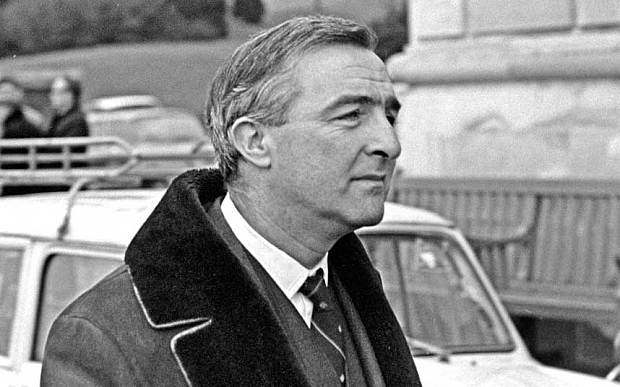
Intelligence also reached Wallace at HQNI that Paisley had been present while Noel Doherty and Billy Mitchell had collected explosives in Lurgan.
Unfortunately for Paisley, McGrath knew about the events at Lurgan, something that undoubtedly enabled him to control Paisley in later years when he desperately needed help after the eruption of the Kincora scandal.
083. The reasons for the UVF split with Tara.

McGrath ran his own Loyalist paramilitary organisation called Tara. Roy Garland served as his deputy. Tara flourished for a while but it fell into decline after McGrath refused to deploy his troops during the August 1969 riots. Tara had enjoyed strong links with the UVF whose members then began to lose faith in McGrath. Additional doubts were raised because McGrath was given to boasting about having links to British Intelligence.
UVF inquiries led them to conclude McGrath was indeed connected to one of Britain’s intelligence services. McGrath’s homosexual relationship with a British diplomat in Dublin in the 1950s may have served as his introduction to MI6 and kickstarted an arrangement wherein McGrath may have helped MI6 convey anti-Communist propaganda pamphlets behind the Iron Curtain on ships which docked at Dublin harbour.
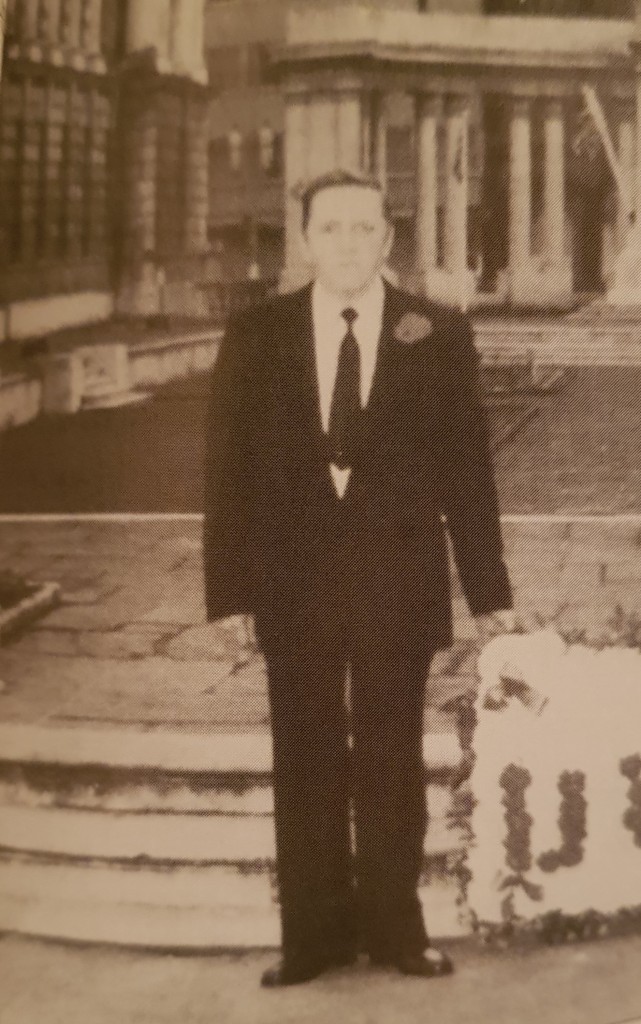
The UVF decided to undermine McGrath by highlighting his homosexuality instead of denouncing him as a British agent. He was challenged by the UVF leader, Samuel ‘Bo’ McClelland, at a Tara gathering in 1971. According to Chris Moore, author of the ‘Kincora Scandal’: ‘McClelland’s questions were aimed at pressing McGrath into revealing whether or not he was homosexual. McGrath became embarrassed and responded by calling for McClelland to be ‘drummed out’. The UVF leader stood up and called for his men to leave. They left, never to return’.
Tara took a battering but struggled on. A declassified British file dated 13 February 1976, which was furnished to the Hart Inquiry, revealed that a ‘source’ had alleged that Tara:
Had been destroyed in 1972 by a smear campaign. They had then been 300 strong and included a number of UVF members. Now they were much smaller and of a higher calibre and were UVF’s main rivals… McGrath (according to source) has long made a practice of exploiting other people’s sexual deviations and Tara is vulnerable on this account. Paisley has expressed strong animosity towards McGrath.’
084. Paedophile spies in the orange camp
In June 1971 McGrath, a man with a well-deserved reputation as a sleazy sexual predator, secured a job at Kincora. Moreover, he did so without any type of welfare training or experience. His only qualification was as hairdresser.
McKeague, who had become a British Army informant in the early 1970s, was almost certainly blackmailed into becoming a full-blown agent of MI5 in 1976. There is a significant difference between an informer and an agent. An informer is someone who maintains a lot of control over what he does, whereas an agent normally acts in accordance with commands from above.
As the 1970s dragged on, McGrath and McKeague would become increasingly sharp thorns in Paisley’s side because of their links to MI5 and MI6, and their addiction to abusing children.
It was probably McGrath who passed on the information about Paisley’s involvement in the collection of the Lurgan explosives to the British, i.e., the information that reached Wallace at HQNI.
085. The IPU’s interest in Tara.
Whatever about MI5 and MI6 – which are both civilian organisations – William McGrath was not a British military intelligence asset. Indeed, he became a target of British Army psychological operations designed to destabilise Tara. They are described elsewhere in this book.
Colin Wallace believes he ‘first became aware of Tara in 1971…From a military perspective, Tara posed no real threat to the Security Forces at that time. My initial interest in Tara was that some former members of the Ulster Protestant Volunteers were allegedly attending its meetings.’
086. Wallace is told to ignore Kincora because it was already the subject of consideration by ‘other people’.
Wallace believes he first learnt that McGrath was a child molester in early 1972 after he met a social worker who told him ‘that she had a young boy in her charge who had claimed that he had been “sexually assaulted” at Kincora. She went on to say that:
There had been other similar claims involving other inmates and that, although the matter had been reported to the police, no action had been taken. She asked if I could, through Army channels, get the police to investigate. She appeared to be very distressed about the situation and asked that her identity should not be disclosed. I was given to believe that she was particularly worried because key members of the welfare department which ran Kincora were involved and ‘might take reprisals against her’. She also explained that one of the staff at Kincora ‘was a prominent figure in Ulster politics’. This man she identified as William McGrath.
Wallace reported the conversation to one of the Intelligence staff at Lisburn after he returned to his office. He asked
if the matter could be raised with the RUC through our liaison channels. Some days later the officer to whom I had given the information came to my office and said that I should leave the matter alone because it was already the subject of consideration by ‘other people’. I did not regard this as unusual because similar situations arose quite frequently when interest by one intelligence group could quite easily damage an operation which was already in progress. Also, at that time the information was of more significance to the police than it was to the Army.
087. Valerie Shaw tells Paisley about Kincora.
In October 1973 Valerie Shaw, a member of Paisley’s church, informed him that McGrath was abusing children at Kincora. Paisley fobbed her off with empty promises to do something about it.

There were probably others who alerted him but it was all to no avail. From this point on – if not long before – Paisley had to live with the fact that a witness – if not a congregation of them – existed who could reveal that he knew about Kincora.
088. Wallace briefs against McGrath
Meanwhile, during the summer of 1973 Wallace had been instructed by his superiors ‘to brief the press unattributably about McGrath’s sexual preferences, his use of blackmail to force young people into homosexual practices, and the fact that he ‘runs a home for children on the Upper Newtownards Road’.
The briefing which Wallace gave to journalists such as David McKittrick and Kevin Dowling in 1973 is explained elsewhere in this book.
089. Further links between Paisley and Tara.
Wallace adds that by 1973: ‘The PSYOPS unit had acquired a significant amount of additional information about Tara’. They were ‘aware that a number of prominent Tara members were closely linked with the Rev Ian Paisley’. These included James Heyburn, Secretary of Paisley’s church; Hubert Nesbitt, who provided the land on which Paisley’s church was built; and David Brown, Deputy Editor of Paisley’s Protestant Telegraph.
090. Tara and the RUC.
Tara had supporters in the RUC. According to Wallace
We also had information alleging that serving members of the RUC not only attended Tara meetings, but also were involved in the running of the organisation. There were indications that McGrath was obtaining Intelligence information from the RUC on Republicans and there were even claims that RUC stations in East Belfast had supplied Tara with firearms which had been surrendered to the police by members of the public. I do not know how reliable the latter information was, but it was sufficient to make the Army very wary of the RUC when dealing with Tara-related information.
091. Confirmation of Wallace’s claims.
As described elsewhere in this book, Kevin Dowling of the Sunday Mirror and David McKittrick of the Irish Times confirmed they received briefings on Tara from Wallace.
Furthermore, on 13 March 1977, the Sunday Times published an article entitled: ‘The Army’s Secret War in Northern Ireland’ by David Blundy. It reported that at a British Army briefing in 1974:
at which a Sunday Times reporter was present attempts were made to link Paisley with the Protestant para-military group called Tara, a small, obscure and ineffective group as Ulster’s para-military organisations go. The Sunday Times has a copy of an army intelligence summary on Tara which contains accurate details about its organisation…One member, which the summary names, is called a ‘homosexual’ and has conned many people into membership by threatening them with revealing homosexual activities which he had initiated.
The paper believed the purpose of the briefing was:
to link Paisley with homosexuals and Communist sympathisers… Our sources say that the army has produced three anonymous documents on this theme which circulated in Belfast.
092. The IPU attempts to strikes a blow against Paisley.
According to Wallace the first IPU ‘planned attempt to discredit Paisley’ by linking him with McGrath took place in 1974. It ‘was an attempt by the Army to weaken the power of the Loyalist paramilitaries’ during the Ulster Workers Strike (UWC) which was aimed at toppling the Sunningdale-inspired Power Sharing Government. However, the Army ‘plan was not put into action during the strike because of the adverse reaction of the RUC to the Army operation which led to the arrest of quite a few figures in those paramilitary organisations’.
There were subsequent operations against McGrath and Tara. Wallace believes they ‘were initiated by the Army because of the threat he posed to the political process and to the discussions between Loyalist and Republican paramilitaries. I think Paisley was a target at times because he kept changing his stance on key issues.’
Wallace has also revealed that the British Army/IPU was supplied with forged share certificates and a bank account in Paisley’s name which indicated he had made a substantial purchase of shares in Canada with misappropriated funds. Wallace believes the fabrications were manufactured by Intelligence sources in London because the Army in NI had neither the knowledge nor the skills to produce them.
Unfortunately for the smearmeisters in London, Wallace was ‘unhappy about the political nature of the material I was being given and did not show those items – or any of the other political material – to journalists at that time. Clearly, someone else was circulating them. I did send copies to Mrs. Thatcher in 1990 in the hope that she would initiate a proper investigation.’ However, no one from the Government ever contacted him as a result.
In 1990 Michael Taylor, who also worked at Lisburn, confirmed the existence of the forgeries: ‘I saw forged documents, for instance that the Reverend Ian Paisley had a bank account in Canada.’
093. An MI5 plot to murder Paisley.
On 28 April 1987 the Guardian newspaper reported that MI5 had contemplated murdering Paisley in the early 1970s as part of its campaign to break up and discredit the Loyalist powerbase, ‘according to a former civilian intelligence operative who worked in Northern Ireland at the time’.
The Guardian also reported that the ‘allegation was supported yesterday by Mr Paisley who told the Guardian that he had been tipped off about the plot by an army intelligence officer’.

Wallace also spoke to the Guardian in 1987 and was able to point to a letter he had written to Thatcher in November 1984 which had included an account of how an MI5 officer had asked him to produce an analysis of the likely reaction in NI to the assassination of certain ‘prominent leaders in various scenarios’. While this was not particularly unusual, Wallace told the paper, this ‘project was, however, significant (with hindsight) in that it put forward inter alia, the hypothesis that the Rev Paisley might be killed in a Loyalist internal feud involving a homosexual vice ring and the misappropriation of Loyalists’ funds’.
094. The letter which described the attempt to link Paisley to ‘homosexual prostitution at a children’s home in Belfast’ five years before the Kincora scandal erupted.
After Wallace was shunted out of Lisburn, he engaged in a correspondence with the MoD. One letter from 1975 refers to the attempts ‘made by the Security Service [i.e. MI5] to discredit various Loyalist politicians, including the Rev Ian Paisley, by the use of forged documents and by linking the MPs with Loyalist paramilitary figures involved in homosexual prostitution at a children’s home in Belfast’.
095. Paisley meets Colin Wallace in London.
In early 1976 Paisley had become convinced that the NIO – which acted as a front for MI5 and MI6 – was plotting against him.
Wallace has revealed that:
In 1976, a member of Ian Paisley’s church contacted a member of my family and said that IRKP (i.e. Ian Kyle Richard Paisley) wanted to get in touch with me because the press had told him that the Army had been attempting to discredit him and that I had been identified as being involved in that activity. In 1976 I was living in London, having left Northern Ireland in February 1975.
Wallace and Paisley ‘met briefly near Parliament’. Wallace recalls that Paisley ‘began by clearly referring to the material that I had given to the press in 1973/74 relating to William McGrath and Tara. I confirmed that I had briefed the press about McGrath and Tara, but that he and a few other individuals we referred to, such as the Rev Martin Smith [the Head of the Orange Order], were simply mentioned as being people whom we believed were aware of the sexual abuse allegations relating to McGrath.’
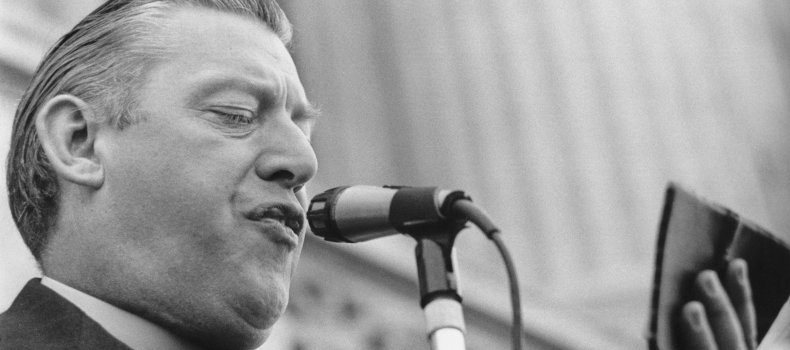
Paisley then proceeded to tell Wallace that ‘he had it on good authority from a source at the NIO that a Foreign Office psychological warfare team at Stormont was engaged in a project to discredit him and key members of the DUP’. Paisley then ‘asked me what I knew about such a committee and I told him that I didn’t know anything because I had been away from Northern Ireland for more than a year’.
The meeting ‘lasted only a few minutes and I never heard from him again’, Wallace has explained.
096. Paisley was ‘very worried’ about the housefather at Kincora.
Wallace also says that:
Looking back on it, I find it interesting that Paisley was clearly aware of the potential danger of his association with McGrath. He didn’t discuss the matter with me in any way, or volunteer any information, he just asked me questions about the briefings I had given to the Press about McGrath and about the [NIO] Information Coordinating Committee.
Wallace ‘got the distinct feeling that Paisley was almost frightened of McGrath, or the extent to which McGrath could damage him’.
In February 1976 Paisley told the House of Commons that a smear campaign against him and other Loyalists was afoot. He specifically referred to the Jeremy Thorpe affair, a scandal which had involved an allegation that Thorpe, the Leader of the Liberal Party, had hired a hitman to kill Norman Scott, his former – and much younger – lover. This indicates that Paisley anticipated smears of a sexual nature.
Paisley would pretend that he severed all links with McGrath after 1973 on account of what Valerie Shaw had told him about McGrath’s proclivities. This, however, is belied by the fact Paisley officiated at the wedding of McGrath’s daughter, Elizabeth, on 22 January 1976.
Irrespective of the charades being performed in early 1976, actual steps were being taken by the DUP to place a distance between itself and Tara. According to a declassified NIO cable dated 7 December 1976, ‘the DUP had decided that members of the paramilitary organisation, Tara, who were also members of the DUP should be forced to resign from the party’ and that ‘Peter Robinson (Secretary of the DUP) would produce a list of other [DUP] members who are members of Tara. These persons will be dismissed in due course’.
096A. Preacher Alan Campbell, member of Tara, paedophile and child killer.
Preacher Alan Campbell was an important figure in Tara. Like Paisley and McGrath, he was a British Israelite.
He was the RUC’s chief suspect in the murder of Brian McDermott, a ten year old boy who was abducted in 1973.
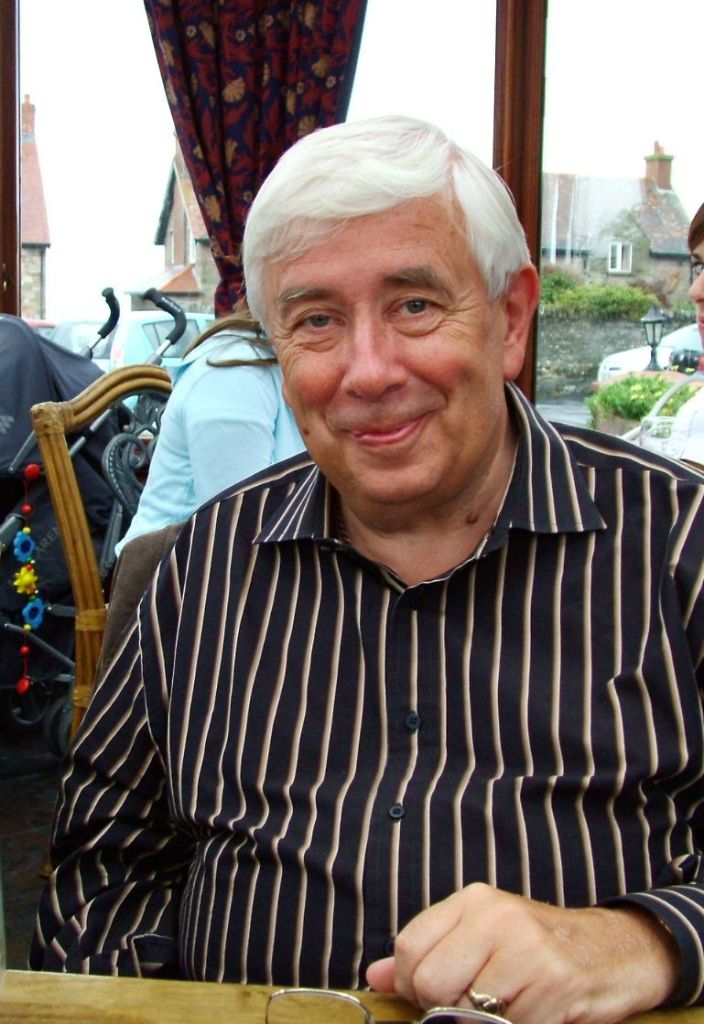
Colin Wallace produced an internal memorandum about the killing and the links to the abuse network that revolved around Kincora.
Campbell was protected from arrest by MI5 – undoubtedly by Ian Cameron – because he was an MI5 agent.
The Wallace document is referred to in this book as the ‘Brian McDermott Child Murder Memo’. It is discussed elsewhere in this book.
The murder of Brian McDermott is the darkest and most foul secret of the entire Troubles.
The murder of Brian McDermott is the most shameful secret in MI5’s history.
The cover-up of what happened to this child is still taking place. A TV production company called Alleycats uncovered new evidence about the murder. A documentary was scheduled for release on BBC NI in May 2021. It was removed from the schedules. It has not yet been broadcast.
Chapter 7.
The Kincora Cover-Up.
097. The Caskey Cover-up.
In January 1980 The Irish Independent in Dublin finally exposed the rape of the residents at Kincora.
The RUC now set about covering-up the role of the police and intelligence services in the scandal.
A key figure in this was RUC Det. Chief Inspector George Caskey. He led a variety of investigations into Kincora until 1985.

Caskey was a deceitful and wily operator. As noted earlier, in November 1974 Wallace had submitted a memo about Kincora – the Brian McDermott Child Murder Memo – to his superior, Col Geoffrey Hutton. It was a handwritten document. Wallace kept a photocopy which his solicitor had typed up in 1982. It was duly handed over to the RUC. Caskey responded by claiming that two typewriters had been used in its creation. This was largely irrelevant – as the original was handwritten. Few people realised that the original document had been handwritten. Hence, Caskey’s bombast gave him a purported reason to dismiss the ’74 memo as a forgery.

Caskey was not even telling the truth about the use of two typewriters. The late Paul Foot, a renowned investigative reporter, commissioned a forensic report which proved only one typewriter had been used.

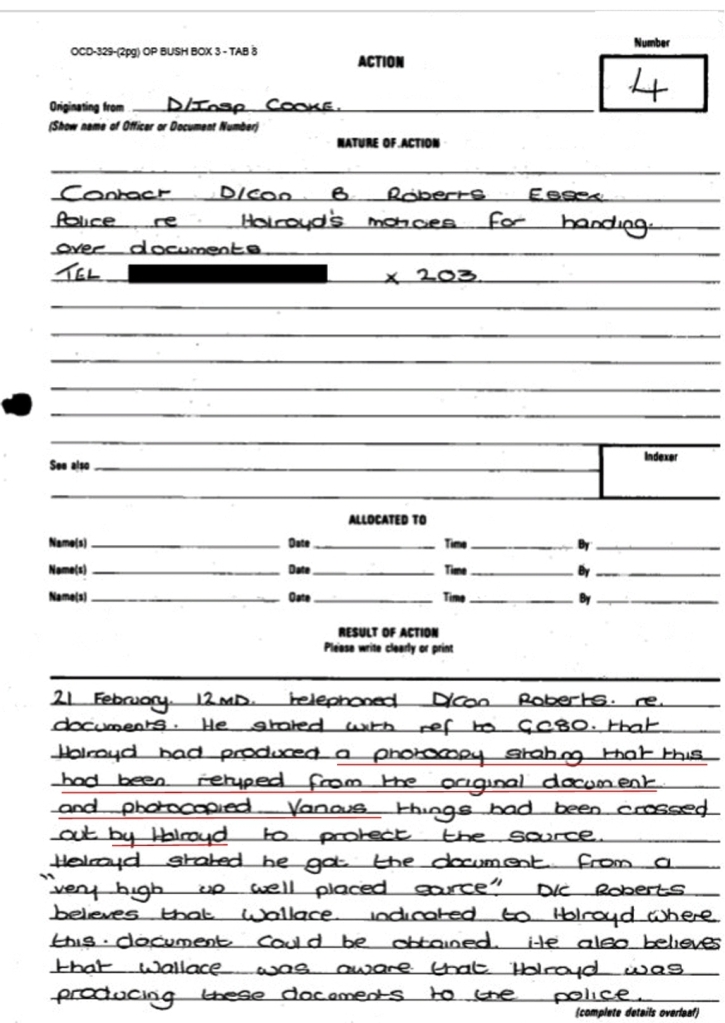
098. Forged and fraudulent witness statements about the Brian McDermott Murder Memo of November 1974.
Another instrument in Caskey’s dirty tricks toolbox was the manufacture of fraudulent witness statements.
One statement was prepared but never signed by a colleague of Wallace. The forgery was presumably prepared but never presented to him as it became clear he was close to Wallace and was not prepared to lie. He will be referred to as Michael Schneider (not his real name). An unsigned copy of his ‘statement’ was furnished by the Hart Inquiry to Schneider decades later.
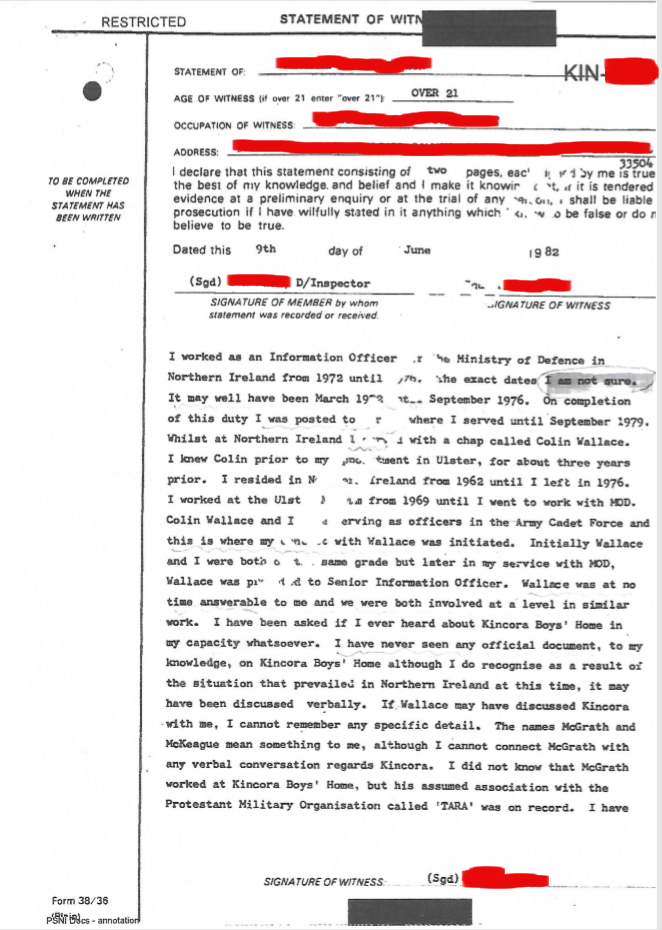
The fabricated and fraudulent Schneider statement contained a brief resume of his career including the fact that he had: ‘worked as an Information Officer in the Ministry of Defence in Northern Ireland from 1972 until 1976. The exact dates I am not sure.’
Schneider in fact worked at this post until December 1975, a date of which he was well-aware. Presumably, the prevarication in the statement was designed to make him look indecisive and provide ammunition to undermine him if it became necessary to do so later.
Schneider’s relationship with Wallace was introduced next: ‘Whilst at Northern Ireland I (worked) with the chap called Colin Wallace’.
Schneider says that he would never have used a word such as ‘chap’. The phrase is, however, typical of the type of language used by the upper class type of Englishman that MI5 and MI6 employed.
Significantly, Schneider’s alleged description of Wallace did not include any reference to his PSYOPS role although Schneider was well aware that Wallace carried out psychological operations:
Colin Wallace and I were serving as officers in the army cadet forces and this is where my contact with Wallace was initiated. Initially Wallace and I were both [illegible] same grade but later in my service with MoD, Wallace was promoted to Senior Information Officer. Wallace was at no time answerable to me and we were both involved at a level in similar work.
The statement also conceals the important fact that Schneider had access to intelligence files at Lisburn. Indeed, he knew about the abuse at Kincora because he had read some of the files that were flowing into Lisburn about the home. Yet, in the forged statement the very opposite picture is painted. Schneider has described the next passage to me as a ‘blatant lie’, namely:
I have been asked if I ever heard about Kincora Boys’ home in my/any capacity whatsoever. I have never seen any official document to my knowledge, on Kincora boys’ home although I do recognise as a result of the situation that prevailed in Northern Ireland at this time, it may have been discussed verbally. If Wallace may have discussed Kincora with me, I cannot remember any specific detail.
The lies which Schneider has described as ‘balls’ kept flowing:
The names McGrath and [John] McKeague mean something to me, although I cannot connect McGrath with any verbal conversation regarding Kincora. I did not know that McGrath worked at Kincora boys home but his assumed association with the Protestant Military Organisation called ‘TARA’ was on record.
The overarching purpose of the forgery emerges next: an assertion designed to undermine the authenticity of a document entitled ‘“TARA” – Reports Regarding Criminal Offences Associated with the Homosexual Community in Belfast’ dated 8 November 1974 which was written by Wallace. This document, quoted earlier, revealed a deep knowledge of the abuse at Kincora. According to the forged Schneider statement:
I have been shown a document marked EGM3 by Detective Inspector … ‘To my knowledge I have never seen this document before’.
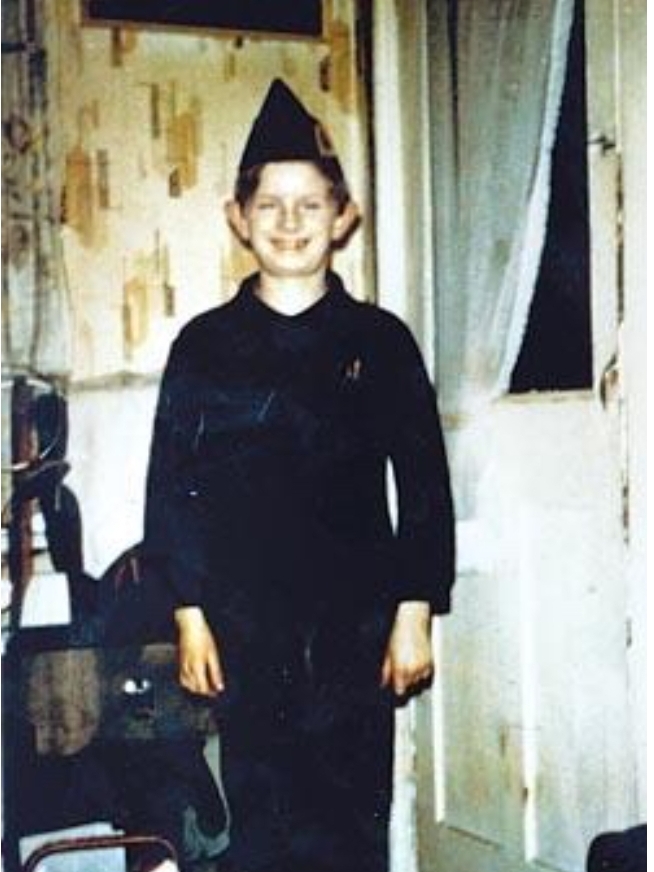
Schneider was never presented with the Brian McDermott Murder Memo by anyone in the RUC – nor anyone else – to ascertain if he had seen it. Had they done so, he would have told them precisely what it was they did not want to hear: that he had seen it. Not only that, he had seen other documents relating to Tara while at Lisburn including a 1973 press briefing which Wallace had shown to a number of reporters.
099. The Caskey witness statements.
A highly successful tactic in the cover-up of the trafficking of Kincora boys to men who were not working at the home, was to take statements from victims who had only been abused by the staff members at Kincora. These statements became the glue that would hold the Kincora lie together for decades to come, at least in so far as official inquiries were concerned.
Caskey and his team traced 104 of the 245 former residents of Kincora, or at least that was what they claimed. According to Caskey’s team, 46 boys complained they had been abused, but allegedly only by the staff at the home.

Richard Kerr, a former resident, is dyslectic. He signed a statement without even knowing what was in it. Kerr had been trafficked to Manchester, London and Venice London while at Kincora in the 1970s. In more recent times, Kerr has provided researchers with photographs taken of him in London and Venice.
A string of victims has since told stories about how they were trafficked, i.e., proof of the existence of a ‘vice ring’. Gary Hoy has described how he was trafficked around Belfast. The late Clint Marcy described how visitors came to the home, some of whom had English accents. James Miller told the Hart inquiry how he and a busload of boys had been abused in Bangor. As early as 1982 a boy told the BBC’s Spotlight programme that he had abused by a senior NIO official. The individual was Peter England, a senior NIO official.
Yet, Caskey was only able to find boys who had been abused by the staff at the home.
At least one boy who had been abused was intimidated by McGrath and a group of men. The boy was told to remain silent. Bearing this fact in mind, it is fair to speculate that others were threatened in order for them to submit misleading statements.
100. Caskey’s game.
Caskey, a native of the North, played all sorts of cat and mouse games with the Englishmen from MI5, MI6 and the NIO, over the Kincora scandal.
It seems his aim was twofold: {i} to protect the RUC which had played a role in protecting the paedophile network of which Kincora was a part and {ii }to let the Englishmen know that the RUC had ‘kompromat’ on them should they ever decide to betray them.
MI5 was suspicious of Caskey and did not let him interview Ian Cameron of MI5, the man who had {i} halted Capt. Gemmell’s investigation into McGrath and {ii} destroyed Colin’ Wallace’s career. Cameron knew the minutes details of the Kincora scandal.
101. Sir George Terry of the Sussex Police believed some of the rape victims had derived ‘a measure of sexual satisfaction or pleasure’ at Kincora.
On 18 February 1982, the Secretary of State for Northern Ireland, James Prior, told Parliament that the Chief Constable of the RUC, Sir Jack Hermon, has asked ‘Her Majesty’s Chief Inspector of Constabulary to appoint the chief constable of another force to investigate allegations about the way in which the police have conducted their inquiries’ into the abuses into Kincora. It was absolutely clear from that statement the RUC would, themselves, be under investigation.
The chief constable appointed by HM Inspector of Constabulary was Sir George Terry, Chief Constable of the Sussex Police, and that he was actually ‘the preferred choice of Hermon. He was not, therefore, a truly impartial investigator. It was also the Sussex police under Terry who, two years earlier, had investigated the events that led to Colin Wallace’s wrongful conviction.
The RUC officer appointed to work with Terry’s ‘independent’ investigation was George Caskey.
The alleged purpose of Terry’s 1982 investigation was to establish if the RUC or intelligence services had questions to answer about Kincora. At the time, the press was awash with allegations that the RUC had known about the abuse of the children but had not lifted a finger to help them.
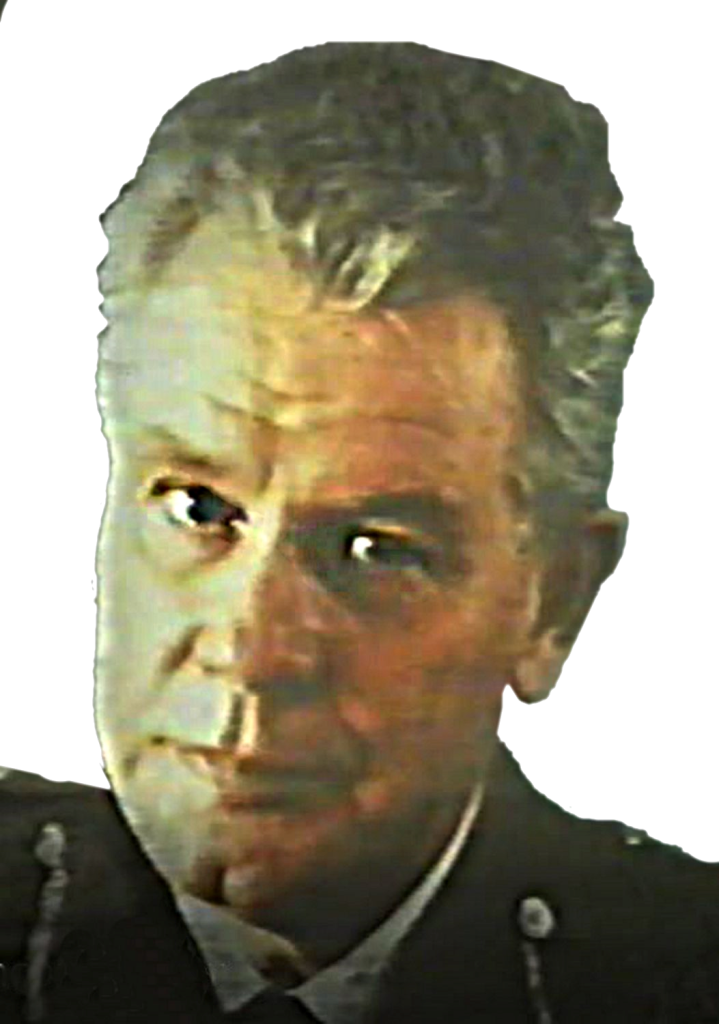
Terry ruled out the existence of a vice ring, trafficking or any knowledge of the abuse on the part of the RUC, MI5 or MI6.
His explanation for the length of time it had taken for the scandal to surface was addressed at paragraphs 30 and 31 of his report. One of the reasons was that the victims had derived pleasure from being raped. He stated:
In homosexual offences, however, the victim is usually embarrassed and frequently feels some personal guilt or shame, but in a few cases also shares a measure of sexual satisfaction or pleasure.
As a consequence victims of homosexual acts are considerably less likely to make a formal complaint and even less inclined to tell others what had occurred; often even close friends of victims will be unaware of the offences committed because the victims will want to conceal from them ‘their guilty secret’.
As the foregoing quote also demonstrates, Terry was unable to distinguish between child rape and homosexuality.
None of this explained why numerous complaints to a variety of agencies – including the RUC – had been ignored.
Terry told one palpable lie: he claimed he had received the full cooperation of the MoD. At the time the MoD was acting as gatekeeper to Ian Cameron. Cameron had ordered one of his subordinates, Capt. Brian Gemmell, who had discovered was going on at Kincora, to drop his inquiries into William McGrath. Yet, when one of Terry’s investigators tried to talk to Cameron, the MoD blocked access him. Terry’s investigators had wanted to ask Cameron questions about the obstruction of Gemmell’s inquiry.
This obstruction cannot be equated with full co-operation.
The fact that Terry lied about the co-operation of the MoD in his report, however, implies that even if he or his investigators had reached Cameron, he would have accepted whatever implausible excuse Cameron might have disgorged.
Significantly, the Hart inquiry of 2017 – for all its many staggering failings – at least managed to criticise this particular part of the Terry Report.
The deceit of Terry became an embarrassment to the people responsible for the ongoing Kincora cover-up, i.e., the Cabinet Office, the NIO, PSNI, MI5 and MI6. Recently, the press was told that all copies of the report had disappeared. A copy of the document, however, can be read and/or downloaded from this website.
The next two paragraphs are links to two stories on this website about Sir George Terry. The stories can be accessed by clicking on the paragraphs:
According to the report by Sir George Terry, the corrupt former Chief Constable of the Sussex Police, one of the reasons it took so long for the Kincora child rape scandal to become public knowledge was because some of the boys derived “sexual satisfaction or pleasure” from what had happened to them. By David Burke.
The deceitful Terry Report into Kincora has not disappeared. It was written by the late Sir George Terry, the corrupt former Chief Constable of the Sussex Police. It concerns the squalid Kincora child rape scandal. It was meant to have been destroyed. A copy survives, albeit with some redactions. Throughout the document, Terry equates child rape with what he describes as the ‘crime’ of ‘homosexuality’.
102. Terry knew the RUC had not been allowed to interview Cameron either.
Terry became aware that MI5 had protected Cameron from Caskey too.
Terry was told what Cameron allegedly would have said to Caskey had the RUC man managed to reach him. Terry was provided with this account at a secret meeting which took place on 27 January 1983, at the County Police Headquarters at Lewes in Sussex at 12.30 a.m. Three people attended it: Terry; Bernard Sheldon, MI5’s solicitor; and Terry’s ‘Staff Officer’, Det. Chief Inspector Flenley.
On 3 February, Sheldon wrote a ‘NOTE FOR FILE’ in which he recorded that he had explained to Terry why:
b. CASKEY’S attempts to interview CAMERON and the reasons why he had been unwilling to authorise CAMERON to make a statement. I said that it was my understanding that the RUC had been informed that CAMERON agreed that he had received a report in general terms alleging that McGRATH was a homosexual, that he would have told GEMMEL that he should make no further enquiries in this field and that neither he nor anyone else in that part of the intelligence machine under our control had passed information to the police. CAMERON regarded the information as gossip and the searcher information about Tara as to sensitive to be handled by the Army.
This process was the rough equivalent of a police officer being asked to investigate a crime involving child abuse, yet being told by the chief suspect that he could not interview him. Instead, the suspect was directing the police to accept the veracity of a hearsay account from the suspect’s solicitor. Furthermore, that the account was not going to be tested by even the most elementary line of questioning.
103. Terry and Caskey knew about the 1973 Tara press briefing.
Terry discovered that journalists had been briefed by Wallace about McGrath and Tara.
It surely occurred to him that if Wallace was aware of the activities of McGrath and Tara, MI5 must have know a lot about it too.
Sheldon’s ‘NOTE TO FILE’ recorded that Flenley stated at the meeting held on 27 January 1983 – which Terry attended – that:
CASKEY had been informed by press sources that Colin Wallace [redacted] had told them many years ago about the homosexual goings on at Kincora. Apart from this there was no actual evidence to establish the involvement of Civil Servants or of any Army cover-up.
This was a fact of enormous significance that should have been followed up by Terry but was not.
104. Terry and James Miller.
If Terry discovered anything about the attempt of James Miller, the ex-paratrooper, to spy on Tara, he left it out of his report.
Was the file on Miller and Tara given to him?
If not, why not?
105. Terry and Caskey knew about Gemmell.
Sheldon’s ‘NOTE TO FILE’ also reveals that Terry knew that Caskey had conducted an ‘interview with GEMMEL in July 1982’.
Terry did not pursue this line of enquiry either, or if he did, he left it out of his report.
106. MI5’s distrust of Caskey.
It is clear that MI5 was distrustful of the RUC, especially Caskey. Terry and his team shared this view.
Sheldon noted that Flenley had a hostile opinion of Caskey. He recorded that:
d. CASKEY was in his view a very ambitious officer who took care to mix with the right people. He thought he was solely motivated by his own self-interest and by his desire to get on. He did not think that he was influenced by any anti-British or anti-intelligence sentiment. This might now be true of some other RUC officers.
107. Information ‘Too ‘sensitive’ even for the British Army. Why then call it ‘gossip’.
At the meeting with Terry in Lewes, Sheldon told Terry that Ian Cameron regarded the information Capt. Gemmell had passed to him as ‘as gossip’. Yet he then said that it was ‘too sensitive to be handled by the Army’.
Gemmell had reported that McGrath was engaged in sexual activities with minors. Yet, if it was just tittle tattle, why was MI5 also maintaining that it was ‘too sensitive’ for the ears of British military intelligence?
This does not make sense.
It makes more sense to treat this part of the discussion as one where the group was talking in a code they understood, and Sheldon was being careful about what he was recording in the file.
A more realistic reading of this part of Sheldon’s ‘NOTE TO FILE’ is that the information was not in fact gossip and was highly ‘sensitive’ because it related to MI5’s ‘kompromat’ operations and the recruitment of Loyalist paramilitaries such as the serial killer and paedophile, John McKeague.
Unfortunately, Sheldon did not elaborate on the ‘too sensitive’ nature of the information.
There is yet another dimension to the sensitivity of the data: Tara was importing guns from Holland for Loyalist gunmen with the assistance of an ‘undersecretary’ at the NIO. This will be discussed in a later section of this book.
Why did Sheldon of MI5 feel at ease in discussing the fact that there were some secrets that were ‘too sensitive’ for the Army with Terry if Terry was truly an independent investigator?
108. MI5 and the documents that concerned William McGrath, Tara and the murder of Brian McDermott.
Elsewhere in his ‘NOTE TO FILE’, Sheldon told Terry that:
… c. CASKEY was being given a surprising degree of access to members of the Army some of whom had actually produced classified files for his inspection.
The implication of this is that Caskey might find out secrets which could embarrass MI5.
Sheldon must have had {i} the 1973 press briefing on McGrath and {ii} the Brian McDermott Murder Memo of November 1974, in mind among others.

109. Who was alleging a ‘Security Service’ (i.e. MI5) Cover-up?
MI5 was concerned that Caskey had spoken to a witness who had claimed that an MI5 cover-up was in progress. MI5 is referred to as the ‘Security Service’ in this part of the Sheldon’s ‘NOTE TO FILE’
Why would this concern an institution with nothing to hide?
Why was this discussed at a secret meeting with a so-called ‘independent’ investigator?
Did MI5 not fear that Terry might take up this lead?
Surely, if Terry was a truly independent investigator, this is what he would have done.
Yet, he did nothing.
All of this raises the probability that Terry real assignment was to protect MI5, especially if it came to a show down with the RUC.
Sheldon’s note recalls that:
i. CASKEY’S interview with [redacted] on 11 January and his references to a Security Service cover up. I said that I understood that there had now been a further interview with Lt Col WATSON at which CASKEY had made similar remarks.
There is no indication that Terry followed up these leads.
It is not known who was alleging a cover up as the ‘NOTE TO FILE’ released to the Hart/HIA inquiry is redacted.
The Hart (HIA) inquiry which reported in 2017 did not follow up this matter either.
110. Caskey’s explanation for the sin of carrying out a ‘full’ inquiry.
One of the oddest entries in Sheldon’s note relates to a discussion by the parties at the meeting on 27 January about why Caskey was carrying out a thorough inquiry. It is as if it was deemed strange that a policeman wanted to do his job. The bizarre discussion was recorded by Sheldon as follows:
b. In making his enquiries Supt CASKEY had been influenced by the fact that the successful prosecution of McGRATH and others in connection with KINCORA had been stimulated by allegations in the press. As the press had made similar allegations about the involvement of the UK Civil Servants and about an Army cover up CASKEY did not wish to appear before any judicial enquiry without having carried out a full investigation. CASKEY had been informed by press sources that Colin Wallace [redacted] had told them many years ago about the homosexual goings on at Kincora. Apart from this there was no actual evidence to establish the involvement of Civil Servants or of any Army cover-up.
It is more likely that Caskey was gathering information on behalf of the RUC to {i} find out the extent of the exposure of the RUC; {ii} to gather information which could be used as an insurance policy, i.e., if the RUC ever needed to force the hand of MI5 or the British government, it was useful to know what had really happened at Kincora; and {iii} collect material which could be released to an inquiry in a selective and self-serving manner on behalf of the RUC and, if there was no falling out, for the benefit of MI5 as well.
Caskey certainly found out a lot about what had happened about Kincora and covered it up, as described earlier.
111. The Hughes Inquiry of 1984, terms of reference changed behind Parliament’s back.
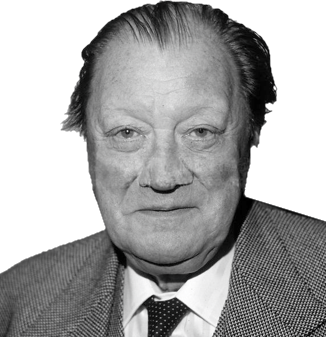
The worthless witness statements taken by Caskey and his team were relied upon by yet another investigation, one undertaken by Judge Hughes. He produced a report in 1984 which failed to get to the truth.
Hughes was originally assigned to investigate media reports of links between British Intelligence and Kincora. James Prior, NI Secretary of State, stated as much in the Commons. Secretly however, Hughes’ terms of reference were changed to prevent him from doing this. Prior hid this from Parliament.
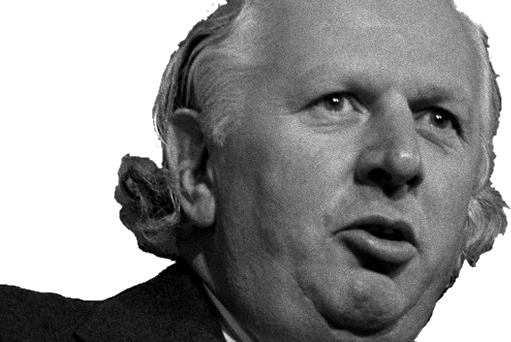
On 18 January 1984, Prior told the House of Commons that the next step in the Kincora scandal would be an enquiry led by a judge which would look at the failure of the RUC.
I believe that it would be within the inquiry’s terms of reference to examine why no inquiry was instigated before 1980. This goes to the heart of much of the concern expressed in Northern Ireland. (Ref: Hansard House of Commons Debate 18 January 1984 vol 52 cc319-26.)
W. Boys Smith of the NIO drew up a memo on 30 June 1983, which was copied to several individuals including Sir Philip Woodfield, the permanent undersecretary at the NIO, and the Director and Co-ordinator of Intelligence (DCI) at the NIO, Hal Doyne-Ditmas, a member of MI5. It stated at para 2 that Doyne-Ditmas was ‘worried about the likely intrusion of the inquiry into intelligence matters if the terms of reference were as wide as those we had in mind…..’
Crucially, there was a reference to ‘secret work very close to politicians’. At paragraph Para 3, Boys Smith revealed that:
Mr Sheldon (MI5’s legal adviser) echoed the DCI’s concern about information being given to the tribunal which would not be in the interests of the intelligence services. He was also concerned about what would be said about secret work very close to politicians. If these activities were to be revealed – through leak if not through public session of the inquiry – there could be a brisk reaction. He pointed out the political embarrassment to be caused to the Secretary of State by any such revelations, quite apart from the difficulties they might cause those engaged in secret work.
What ‘secret work very close to politicians’ was taking place that could have been of interest to an inquiry into child sex abuse?
The most likely answer is that this was a reference to MI5 and MI6’s secret files on members of the DUP (such as the ‘Wife Beater’) and the Official Unionist Party members (such as James Molyneaux MP and Knox Cunningham) not to mention Enoch Powell, all of whom were child abusers.
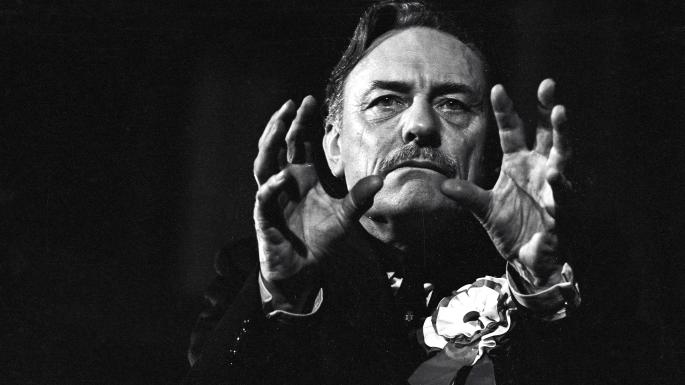
At paragraph 5 (ii) Boys revealed that ‘The Security Service would prefer a GB judge’. (The Security Service is another name for MI5.)
Prior did the bidding of MI5 and Judge William Hughes, an English judge, was asked to conduct the inquiry. Was Prior so depraved that he was prepared to protect a paedophile network which would continue to rape children for decades to save MI5/6 from censure? Alternatively, did MI5 have blackmail material on him?
Para 6 of the Boys’ memo revealed an assumption on the part of Boys that MI5’s unethical lawyer, Bernard Sheldon, ‘might want to suggest [an] inquiry limited to the child-care aspects (presumable therefore under the NI Powers, not the 1921 Act) or a 1921 Act inquiry with terms of references limited in the way suggested above.’
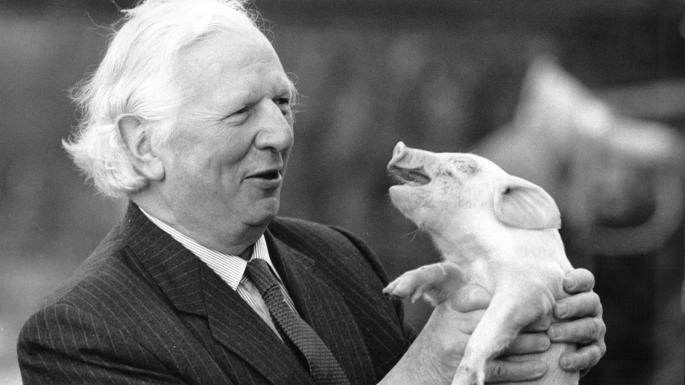
At no time did Prior make it clear either to Parliament or to the public that the Hughes Inquiry was neither required nor empowered to inquire into the performance of the police and intelligence services in relation to the scandal.
When Judge Hughes set out the terms of reference for his inquiry at a public meeting on 3 May 1984, he made no reference to any such restrictions.
Put simply, the desired outcome of MI5 prevailed. Prior’s sleight of hand produced a castrated probe under the Health and Personal Social Services (Northern Ireland) Act Order 1972. Even the terms of reference for it were subsequently watered down to the extent that it became impotent.
If, as the intelligence services claimed, they had no involvement with William McGrath of Kincora, the paramilitary organisation he commanded (Tara), Kincora itself, or with abuse at other homes, why would a 1921-type Tribunal ‘not [have been] in the interests of the Intelligence Services’?

Finally, what ‘political embarrassment’ could be caused to ‘the Secretary of State by any such revelations.’?
Surely, if the intelligence services had no connections with the individuals involved in the sexual abuse, the concerns listed by MI5 were groundless and would not, therefore, have materialised at a 1921 Tribunal?
A number of key questions yet need to be answered: who authorised the changes in the Hughes Inquiry’s terms of reference? Why was Parliament not informed of those changes? What was the justification for those changes? Aside from John McKeague and his ally and fellow paedophile Alan Campbell, who were the ‘extreme Protestants’ that MI5 was protecting?
When Hughes reported, nothing about the role of MI5 was uncovered despite a mountain of evidence that would have been available to him otherwise.
The following men were complicit in this deception: Sir James Prior, Sir Jack Jones, the Director-General of MI5; Hal Doyle-Ditmas the DCI at the NIO; Philip Woodfield the Permanent Undersecretary at the NIO and his counterpart at the Home Office. There were many others in London such as Lord Robert Armstrong, Brian Cubbon and David Goodall, Thatcher’s Cabinet Intelligence Coordinator who share the guilt.

112. Caskey plays cat and mouse with MI5.
Chris Ryder was the best friend the RUC had in the media. He wrote a book about the force, praising its professionalism and integrity. He and Caskey were friends.
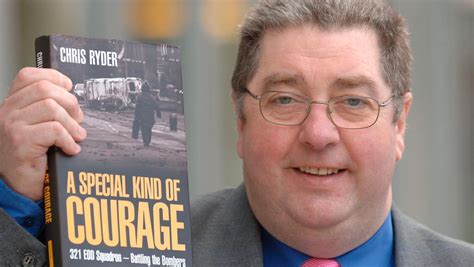
MI5 and the Terry investigation were suspicious about links between Ryder and the RUC. At the meeting attended by Sheldon, Terry and Henley, it was noted by Sheldon that:
f. FLENLEY had interviewed Chris RYDER after the article in The Sunday Times of 5 December 1982. Although RYDER made no admissions that CASKEY had been a source, FLENLEY had little doubt that this was the position. He had learned that RYDER had had a meeting with CASKEY in the week before publication (I gathered that meetings between these two were either unknown or very rare).
That story was about Kincora. It reads like a warning shot across the bows of MI5 that it had a lot to be concerned about. It was entitled: ‘Ulster how homosexuals were used.’
The first paragraph must have been alarming for MI5. It read as follows:
British intelligence officers in Ulster used homosexual politicians in the early Seventies to gather information about extreme Protestant groups because they did not trust the integrity of the Royal Ulster Constabulary.
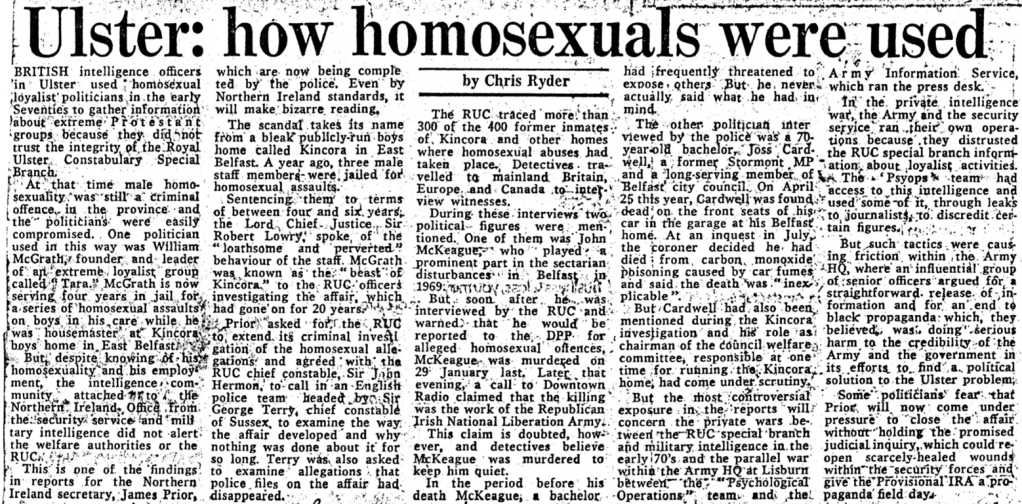
Ryder returned to the subject five years later in a bizarre story about Sir Maurice Oldfield, the Chief of MI6, 1973-78, and Co-Ordinator of Intelligence, 1979-80. It appeared in The Sunday Times, on 26 April 1987. Oldfield was dead at the time. At this juncture, pressure was mounting at Westminster for a full judicial inquiry into Kincora. Ryder’s piece claimed that a drunken Oldfield had been involved in ‘an incident’ in the toilets of The Highwayman, a public house in Comber, Co. Down, in 1980. It was alleged that the victim of his attention had complained about his behaviour.
Ryder did not speak to a single person who had worked at the pub at the time.
Bob Parker of Channel 4 News, however, tracked down each and every person who had, and they all denied any knowledge of the alleged incident.
The police at a local and national level also denied it had happened.
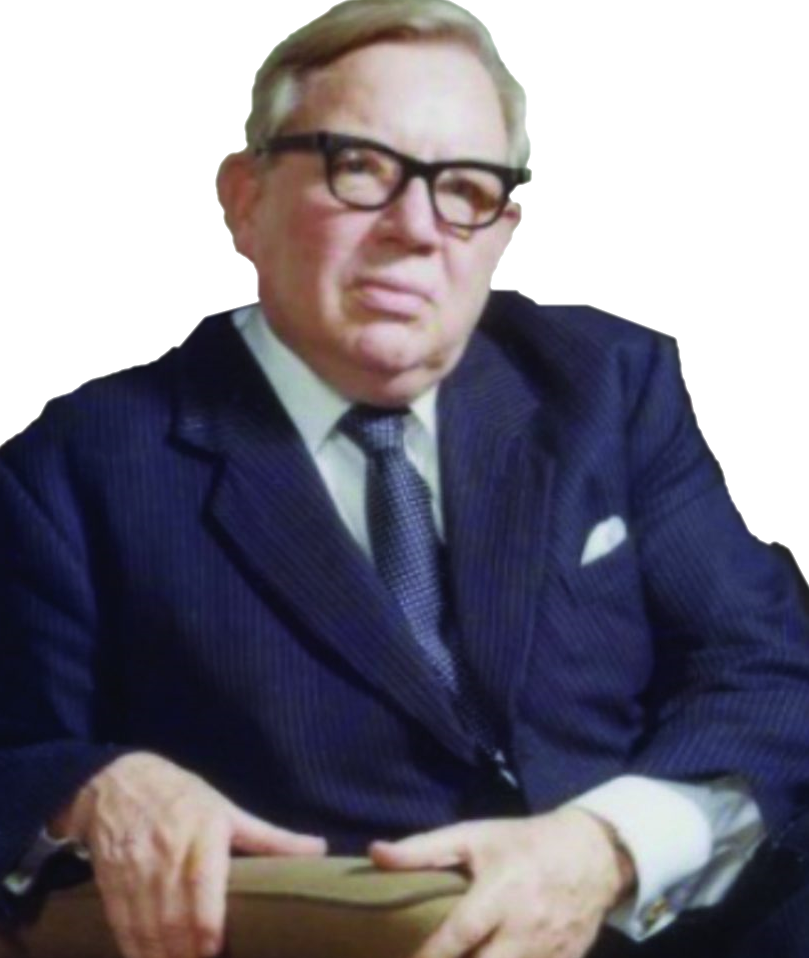
While Oldfield’s sexual preference was for younger males, the article by Ryder was a piece of fiction. Caskey was probably using Ryder to send the spooks a warning: they had as much to hide as the RUC if the real truth were ever to merge. Moreover, Oldfield was an MI6 officer who had been despised by MI5 before his death in 1981, hence an attack on him was not a declaration of war. (MI6 is attached to the Foreign Office. MI5 is part of the Home Office.)
Ryder looked like a clown after the Channel 4 expose. The embarrassment he suffered can only have deterred other journalists from looking at the squalid story of spies and paedophiles.
A judicial inquiry was not commissioned into Kincora, the anti-Wilson plot, or other linked issues, despite the best efforts of an array of British Labour party MPs including Kevin McNamara, Chris Mullin and Ken Livingstone. Why did MPs in Labour and other parties lack their courage? Were they gullible? Compromised? Did misplaced patriotism spark a desire to protect MI5’s reputation? Did they lack courage? Were some of them simply opportunists who were concerned about their career prospects?
[1] Miller provided this information to Barry Penrose of the Sunday Times. MI5’s legal advisers confirmed to Penrose that Miller had worked for the security forces in Northern Ireland. Further confirmation came through the intervention of the D-Notice Committee, a body which does not go into high or even low gear for fantasists. Admiral William Higgins, secretary to the committee at the MoD, requested Penrose’s editor not to identify the names of Miller’s case officers or his current whereabouts. His role as an agent was confirmed at the Saville inquiry.
[2] Interview with Roy Garland May 2021.
[3] Penrose, MI5 ‘plotted’ Ulster Strike, Sunday Times, 22 March 1987. Miller spoke about some of this to Penrose who reported in 1987 that he had said ‘that McGrath’s sexual tendencies were common knowledge inside Tara’ and that ‘My M15 case officer later told me to leave McGrath to them and I understand they used the information to recruit him as an informer. ‘ Last night [William] McGrath confirmed that he knew Miller but would not comment on any other aspect’
[4] Barry Penrose, The Enemy Within?: The case against MI5, Sunday Times, 3 May 1987.
[5] Penrose, MI5 ‘plotted’ is Ulster strike, Sunday Times, 22 March 1987.
[6] Paul Foot, Who Framed Colin Wallace (Pan Books, London 1989), p. 245.
[7] Nelson was run by a military intelligence unit called the Force Reconnaissance Unit (FRU). He was a proficient torturer who specialised in using electricity to extract confessions. He directed multiple murders in Belfast including the February 1989 murder of the Belfast solicitor Patrick Finucane. Ultimately, the Stevens Inquiry resulted in him being placed on trial. At his trial the head of the FRU, Gordon Kerr, spoke up in his favour.
[8] For more information about Jackson see section 118.
[9] Austin Curry, All Hell Will Break Loose, p. 268
[10] Chapter 29, paragraph 175.
[11] John Leahy was a FCO official who had previously served on the staff of the British Embassy in Dublin where he was undoubtedly a key participant in campaign to thwart the political ambitions of Charles Haughey. Leahy became an Assistant Under Secretary at the NIO in 1975. He replaced Michael Cudlipp, who had been appointed by Harold Wilson the previous year as information adviser to Merlyn Rees, the NI Secretary.
[12] Johnson was later implicated in arms smuggling via Carnlough, north-east Antrim, for a militant faction associated with the Vanguard Party of William Craig. One of those guns ended up killing an RUC sergeant called Campbell. See section 127.
[13] Frank Cooper was the POS at the NIO. In 1976 he became PUS at the MoD.
[14] Sunday Observer 4 February 1990.
[15] Groves was promoted to the position of Director-General of the Central Office of Information before he retired from the civil service in 1982.

David Burke is the author of three books published by Mercier Press: –
‘Deception & Lies, the Hidden History of the Arms Crisis 1970’, and;
‘Kitson’s Irish War, Mastermind of the Dirty War in Ireland’ which examines the role of counter-insurgency dirty tricks in Northern Ireland in the early 1970s, and;
‘An Enemy of the Crown, the British Secret Service Campaign against Charles Haughey’, which was published on 30 September 2022.
These books can be purchased here:
https://www.mercierpress.ie/irish-books/kitson-s-irish-war/
https://www.mercierpress.ie/irish-books/an-enemy-of-the-crown/

